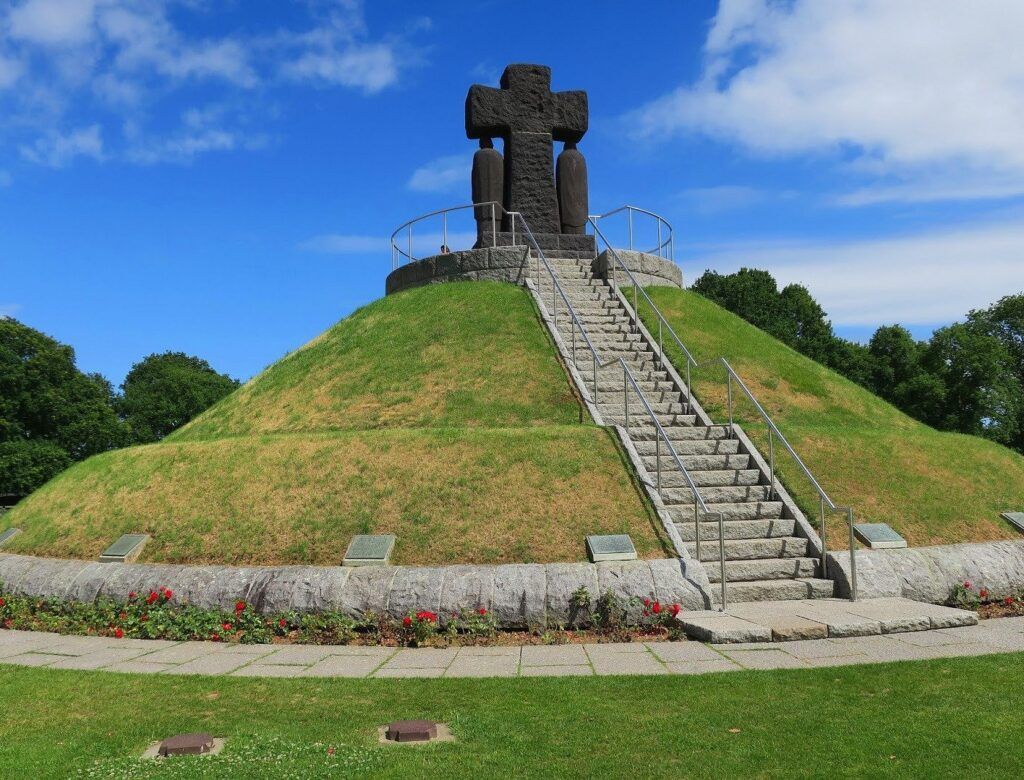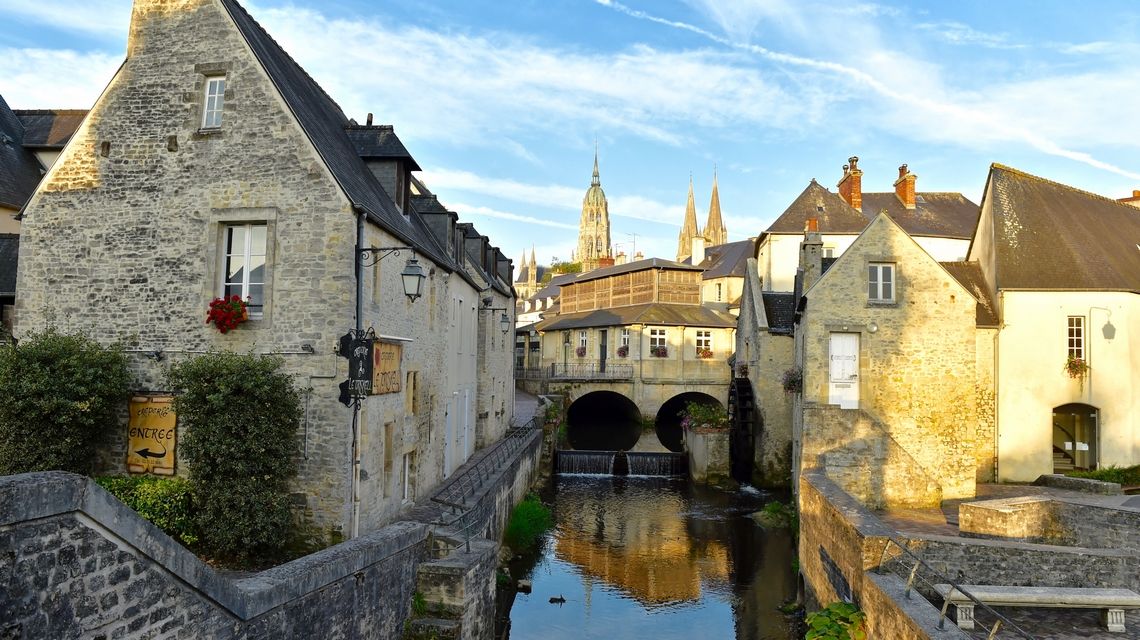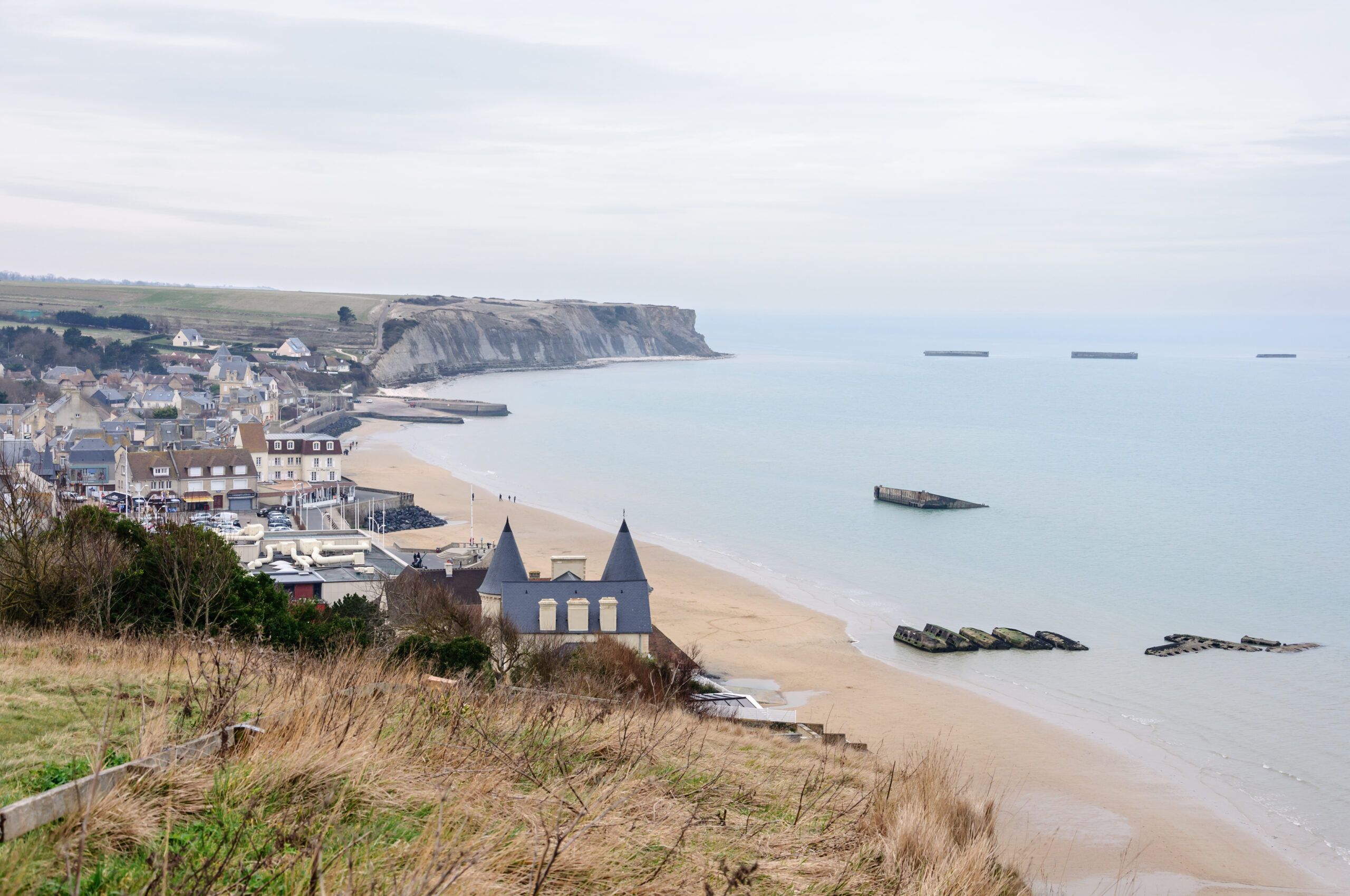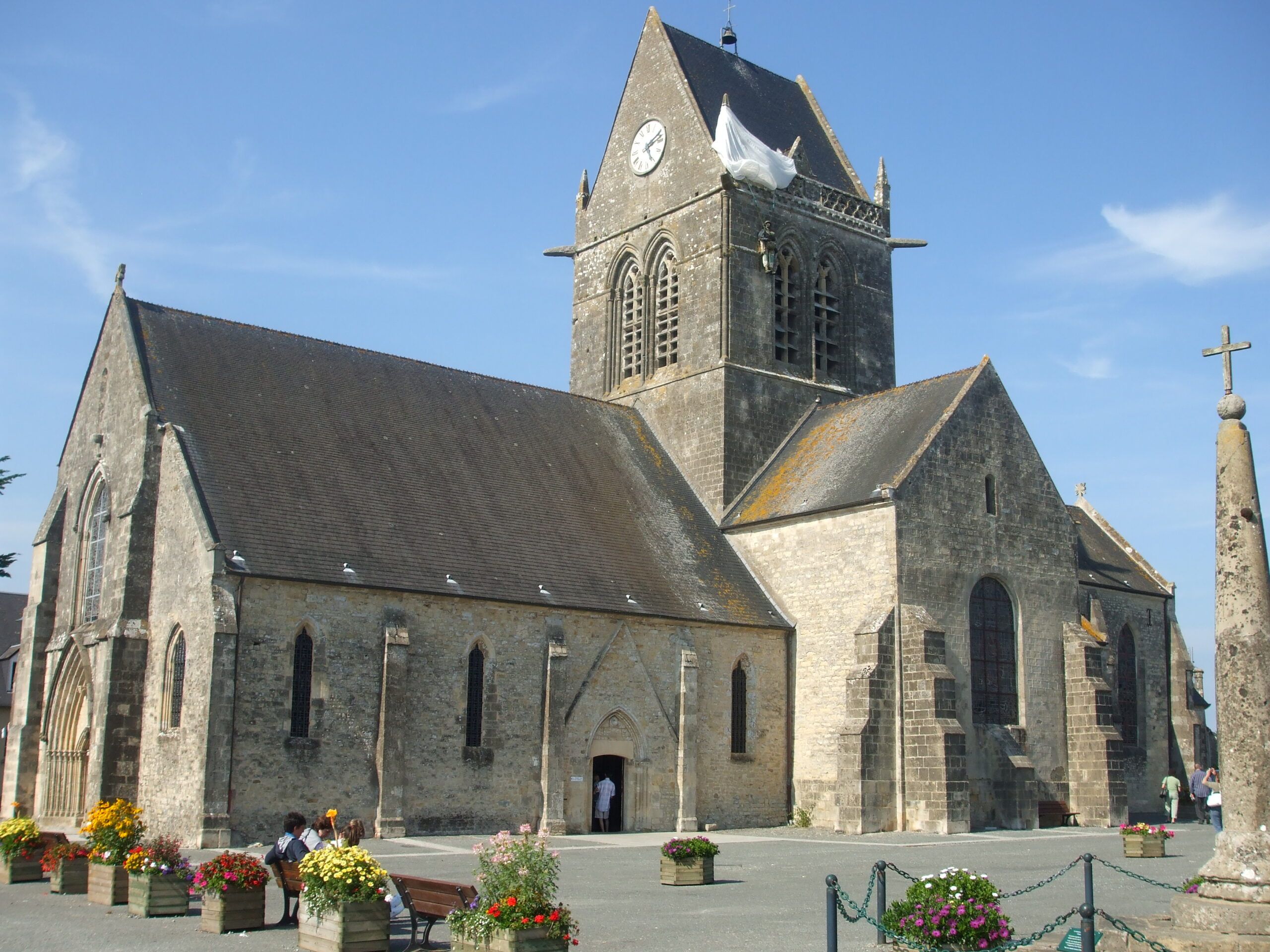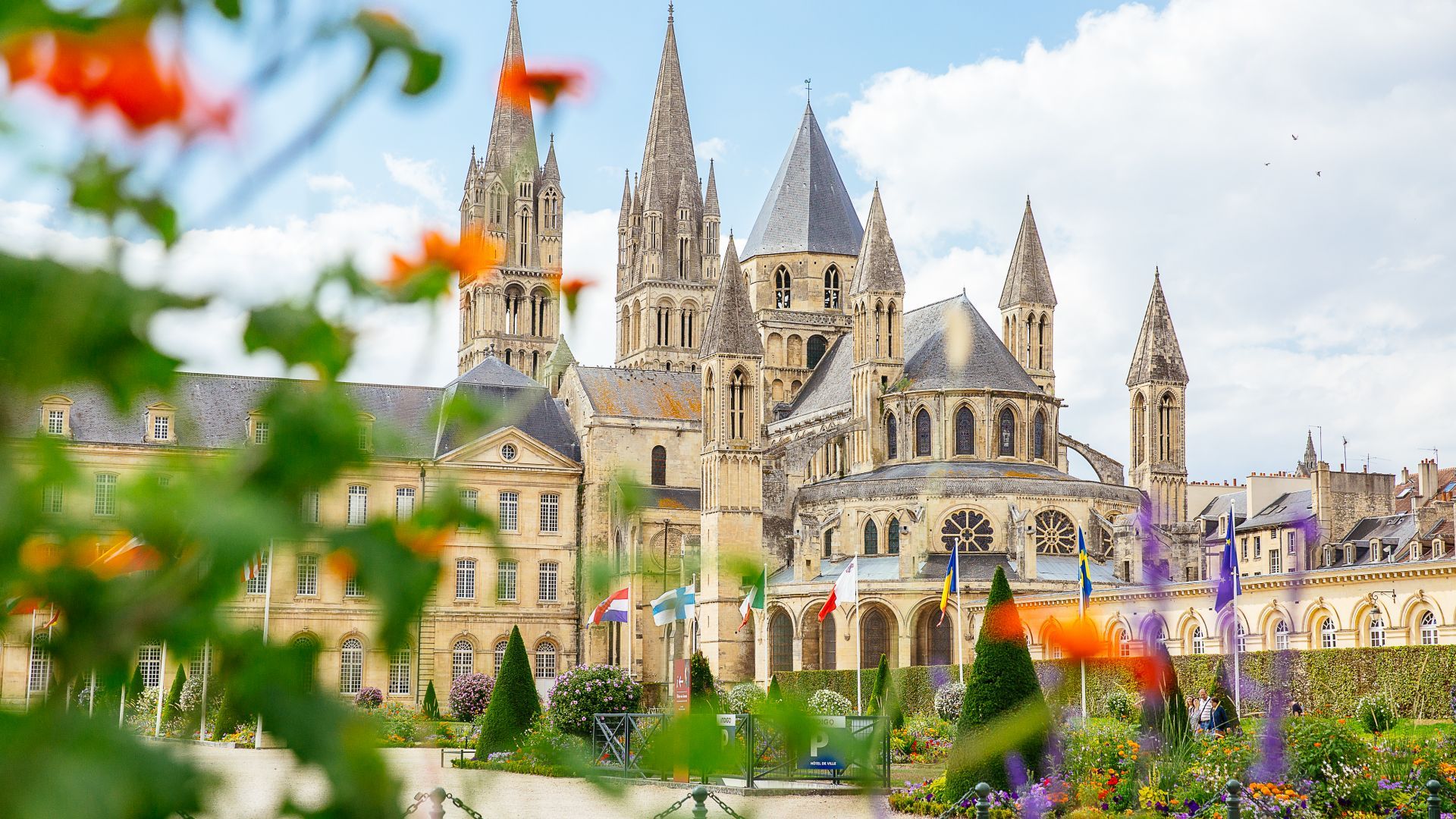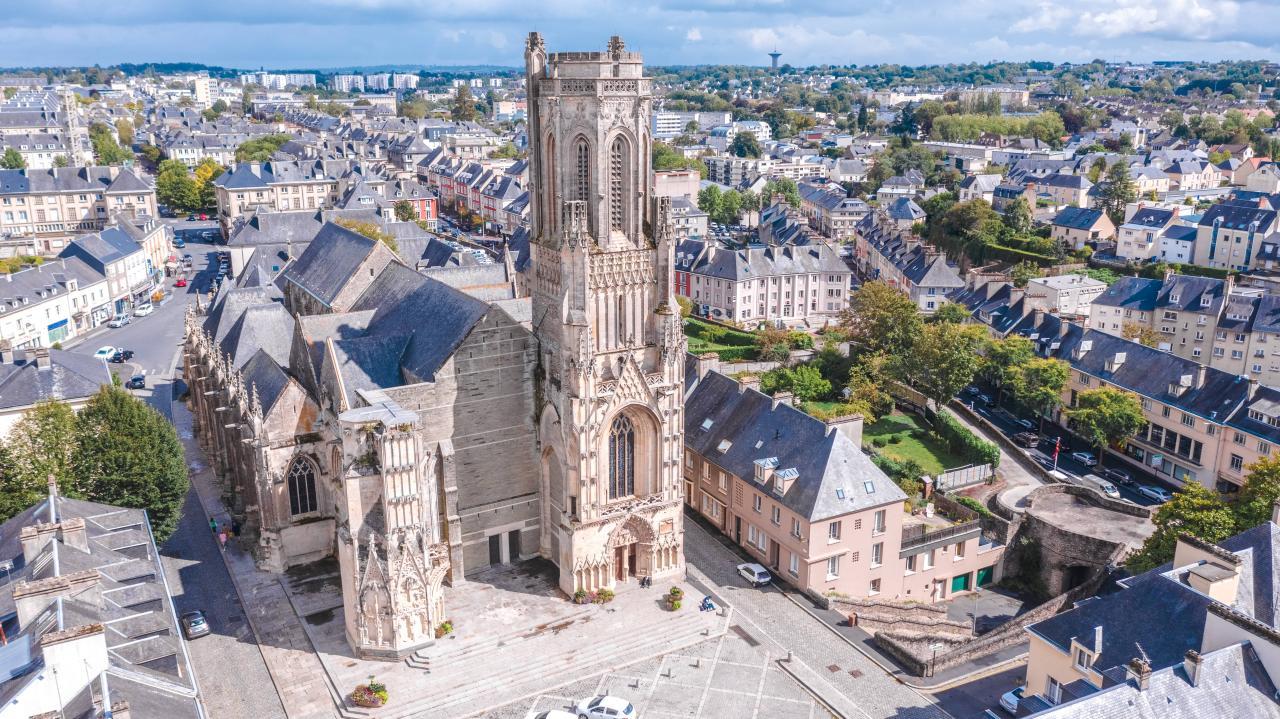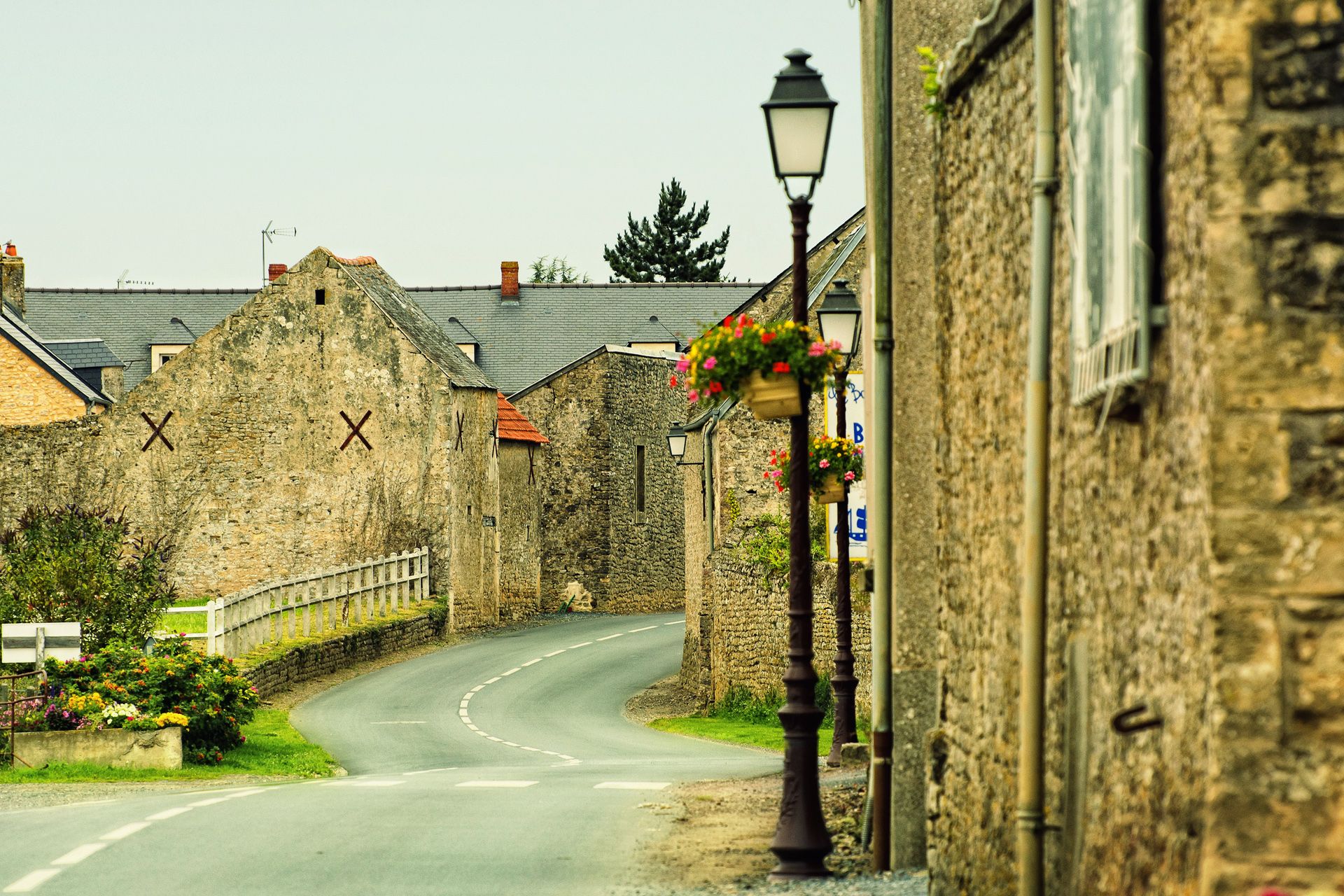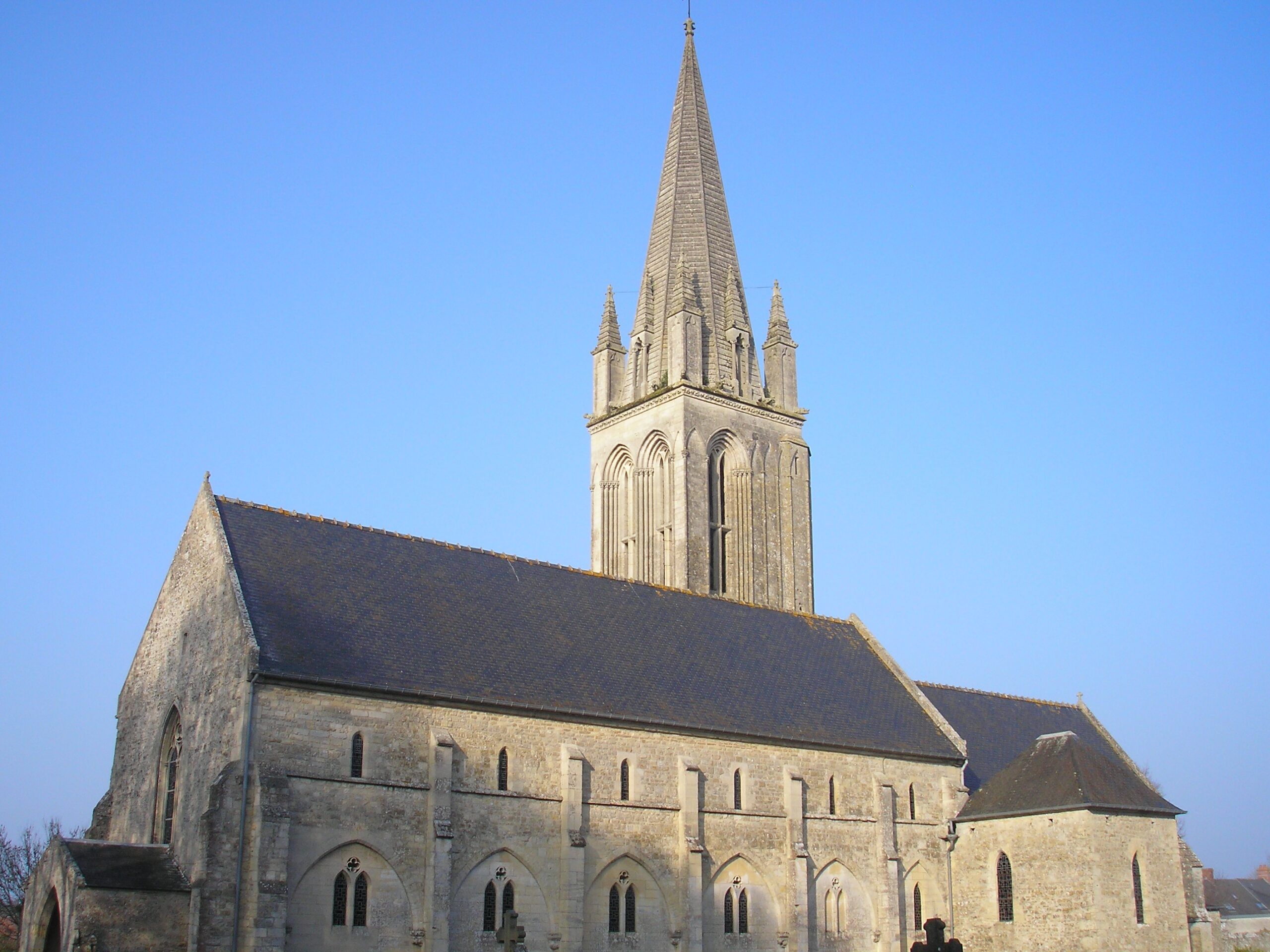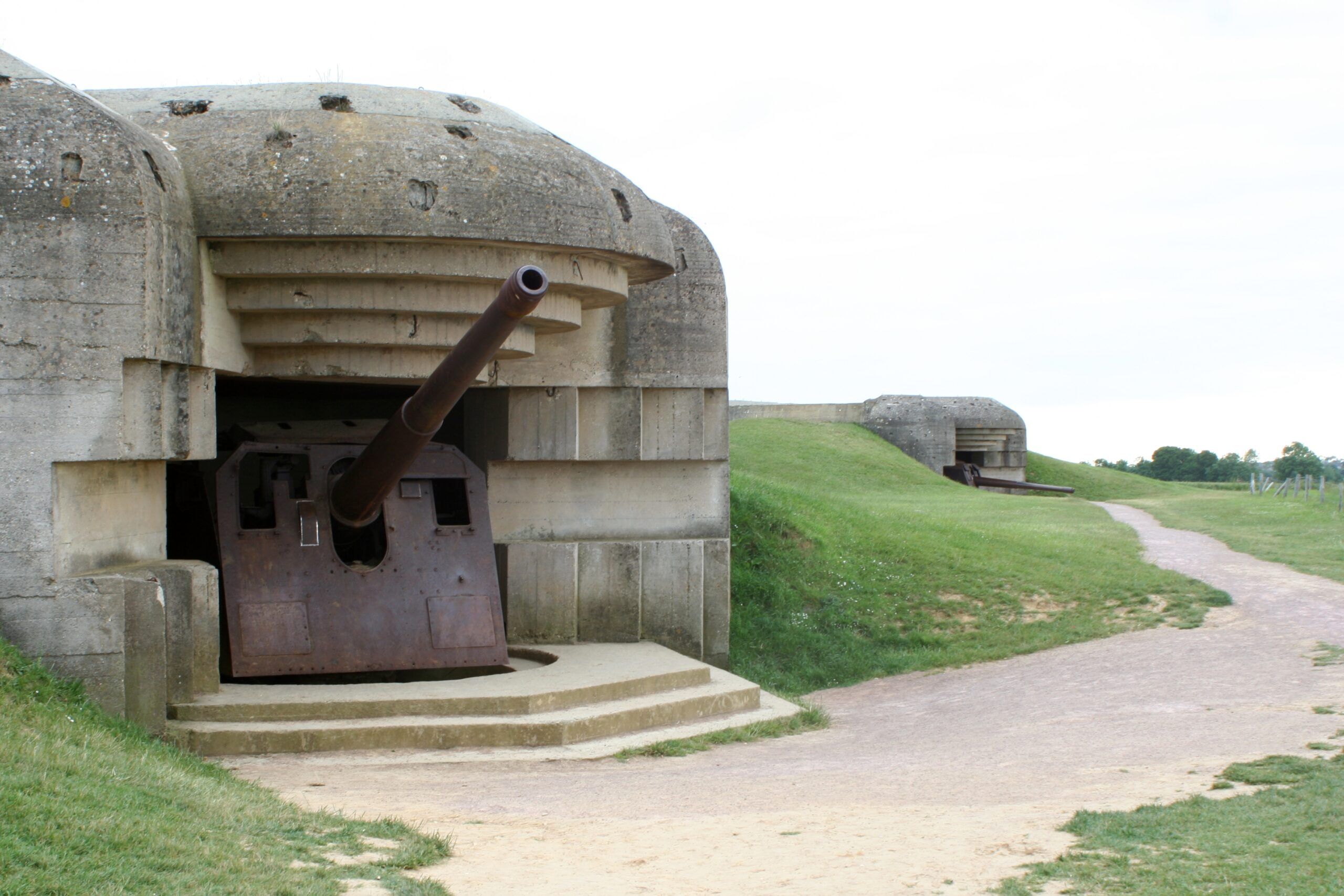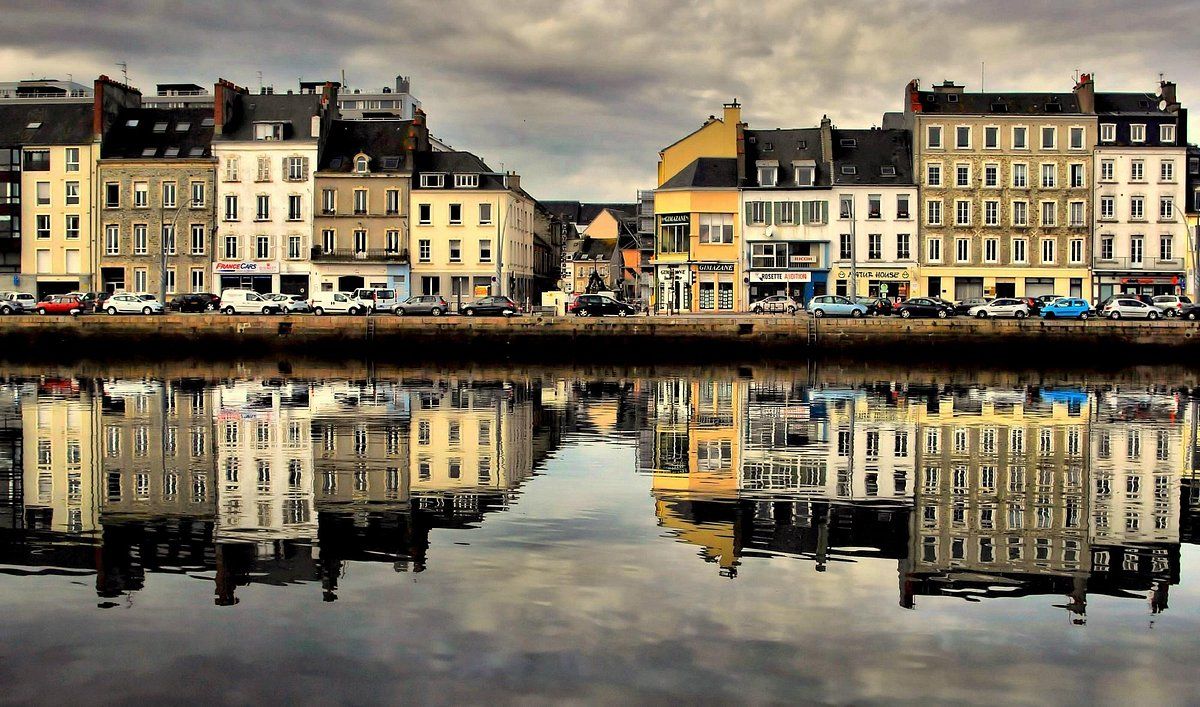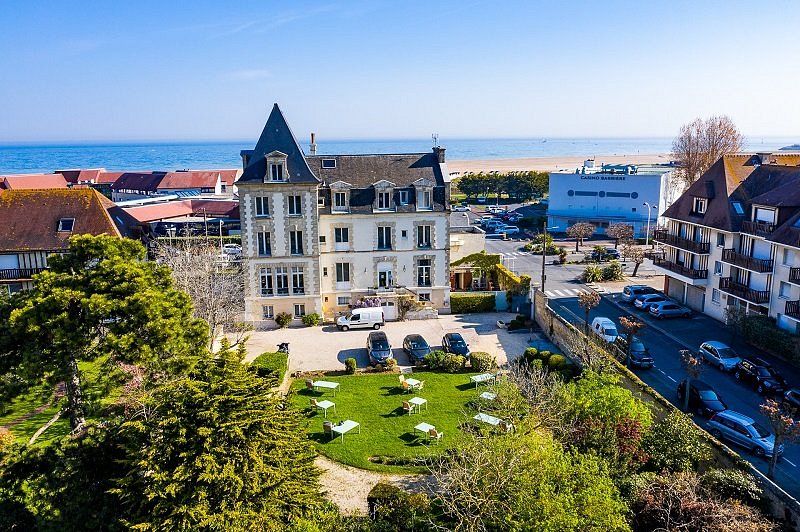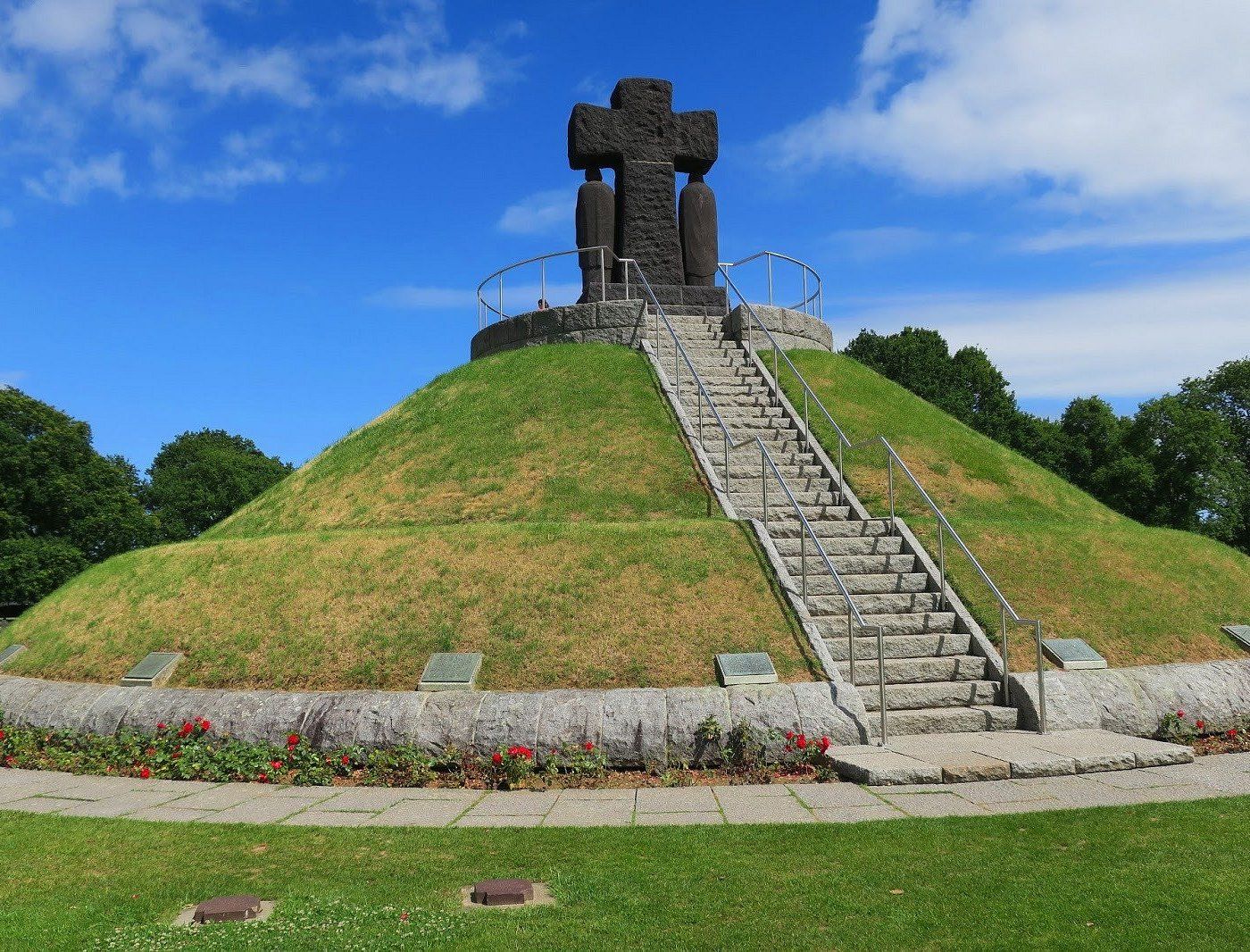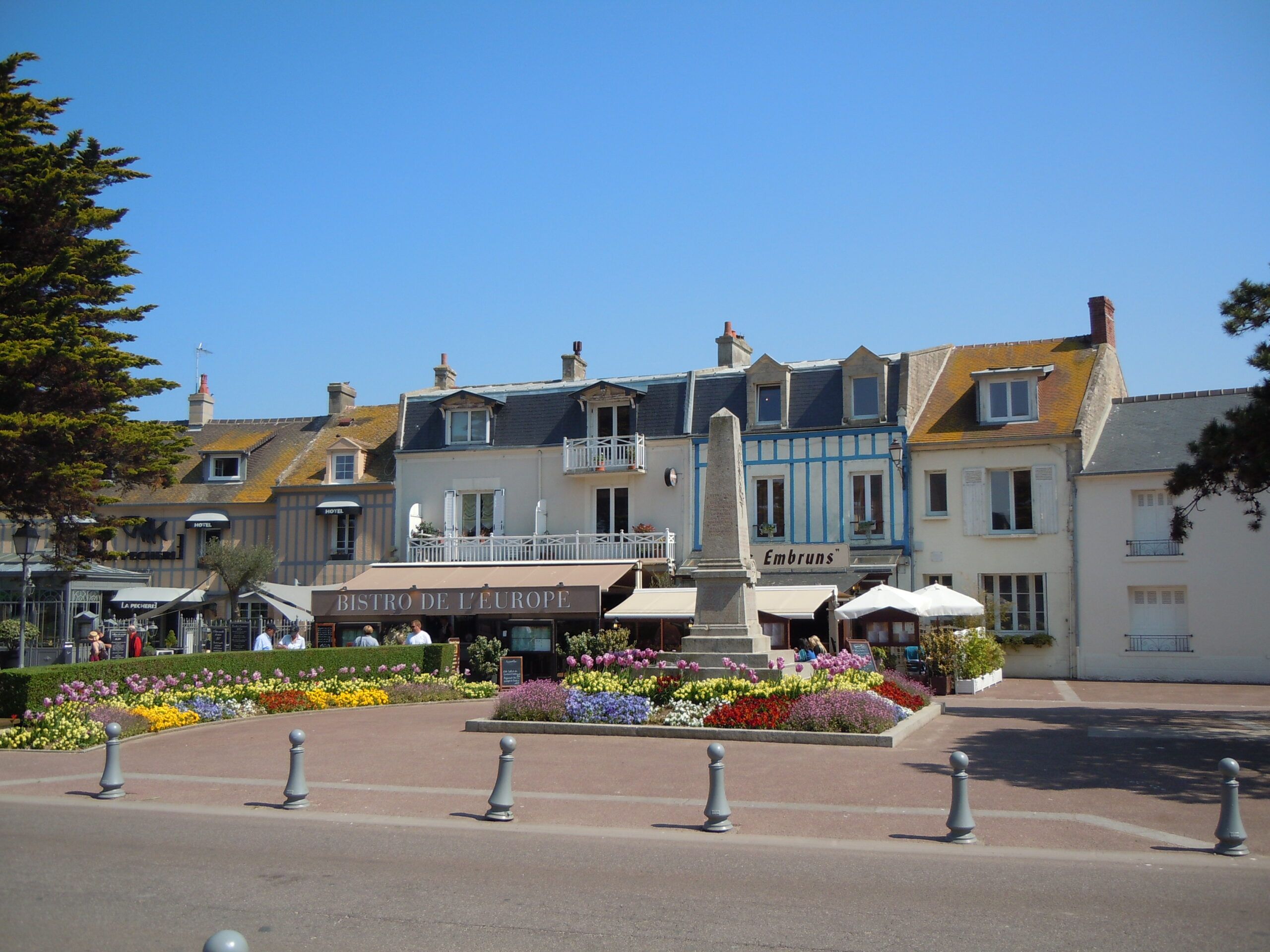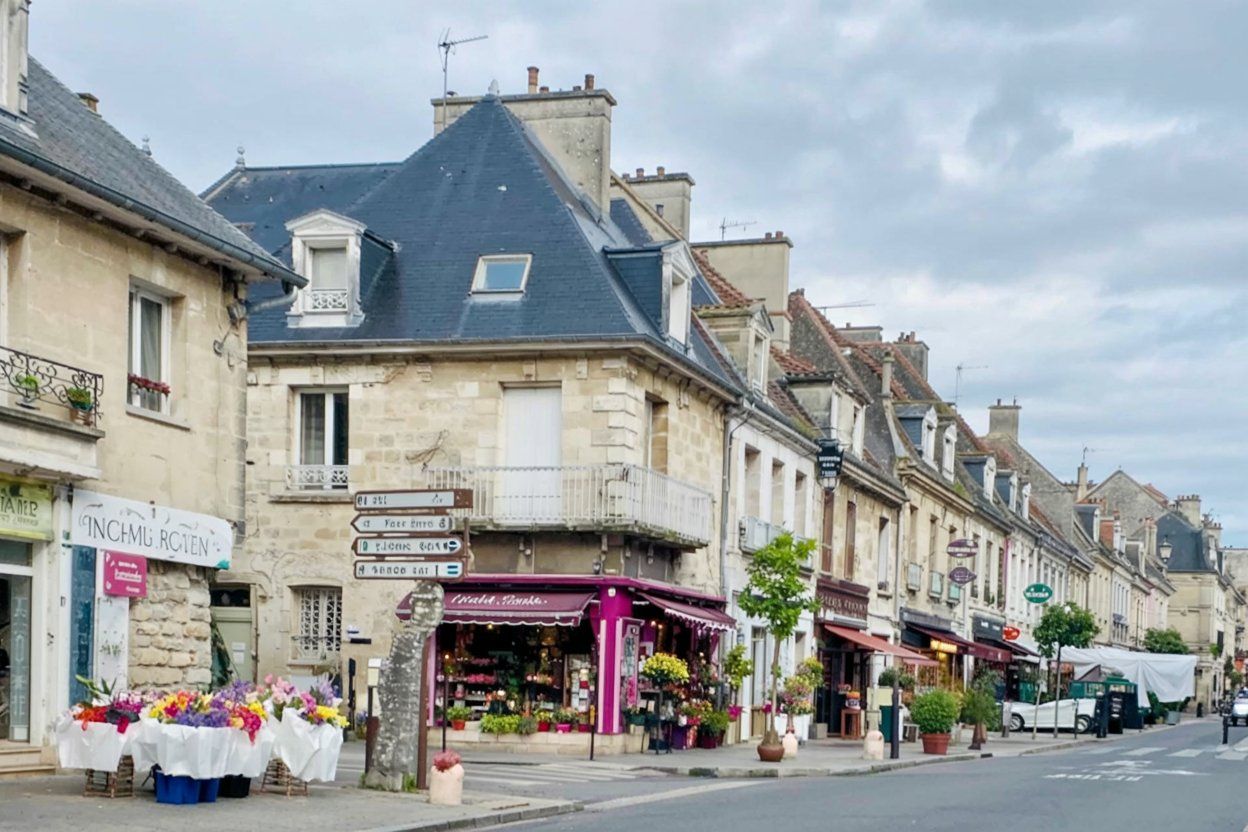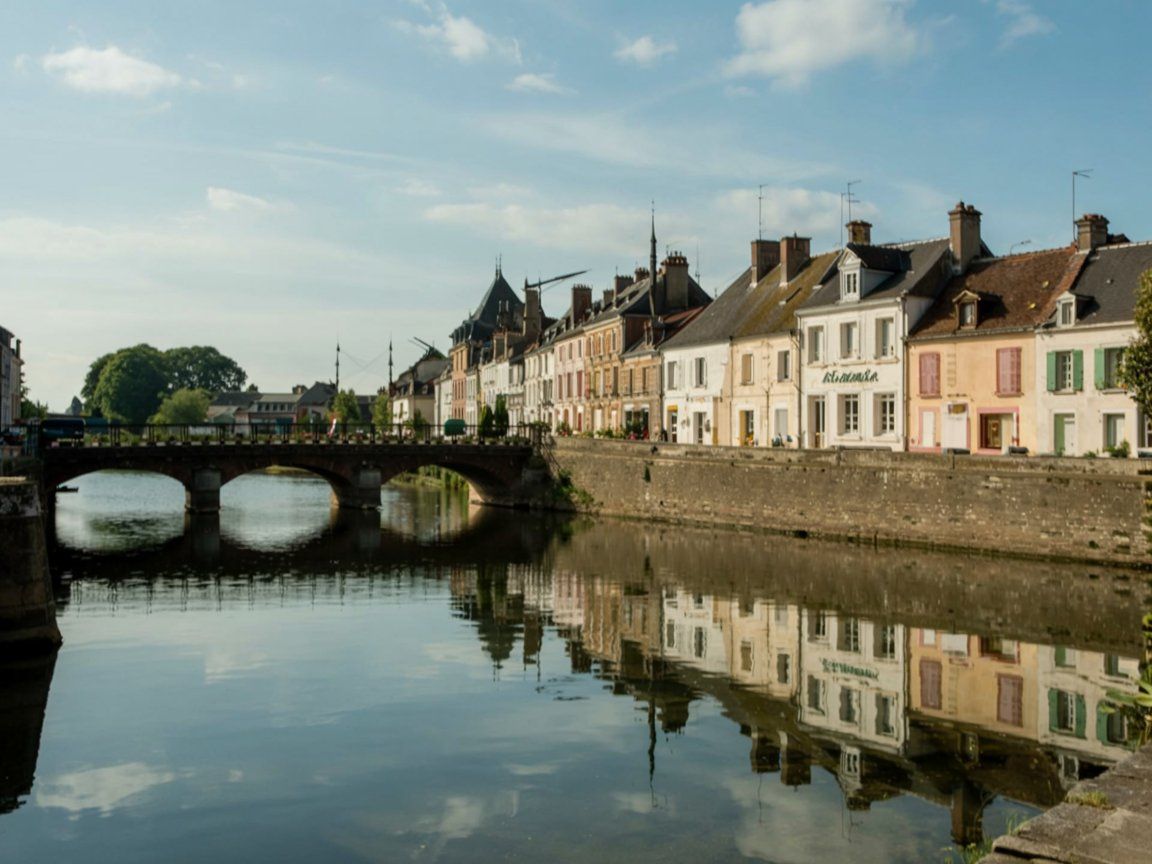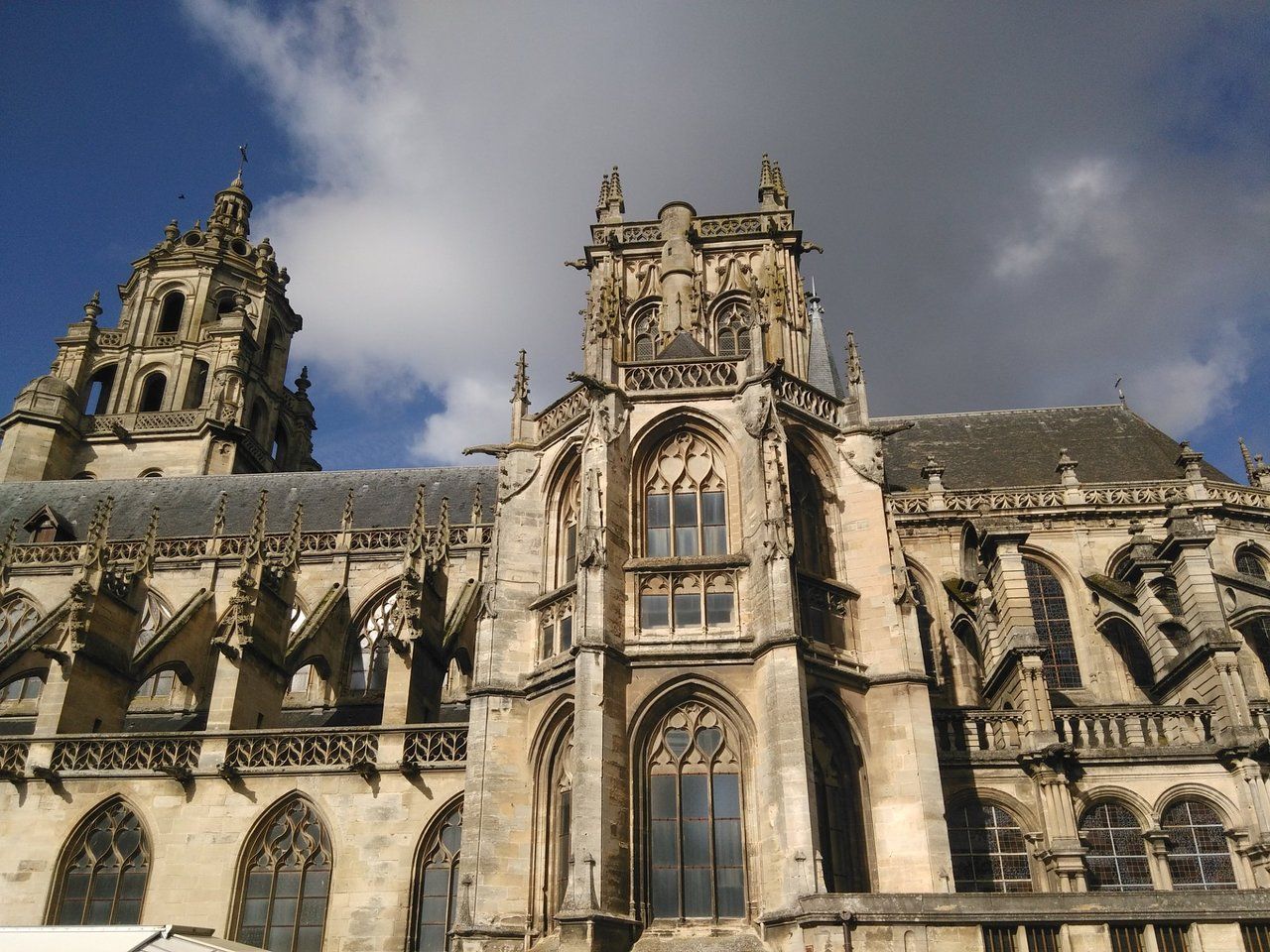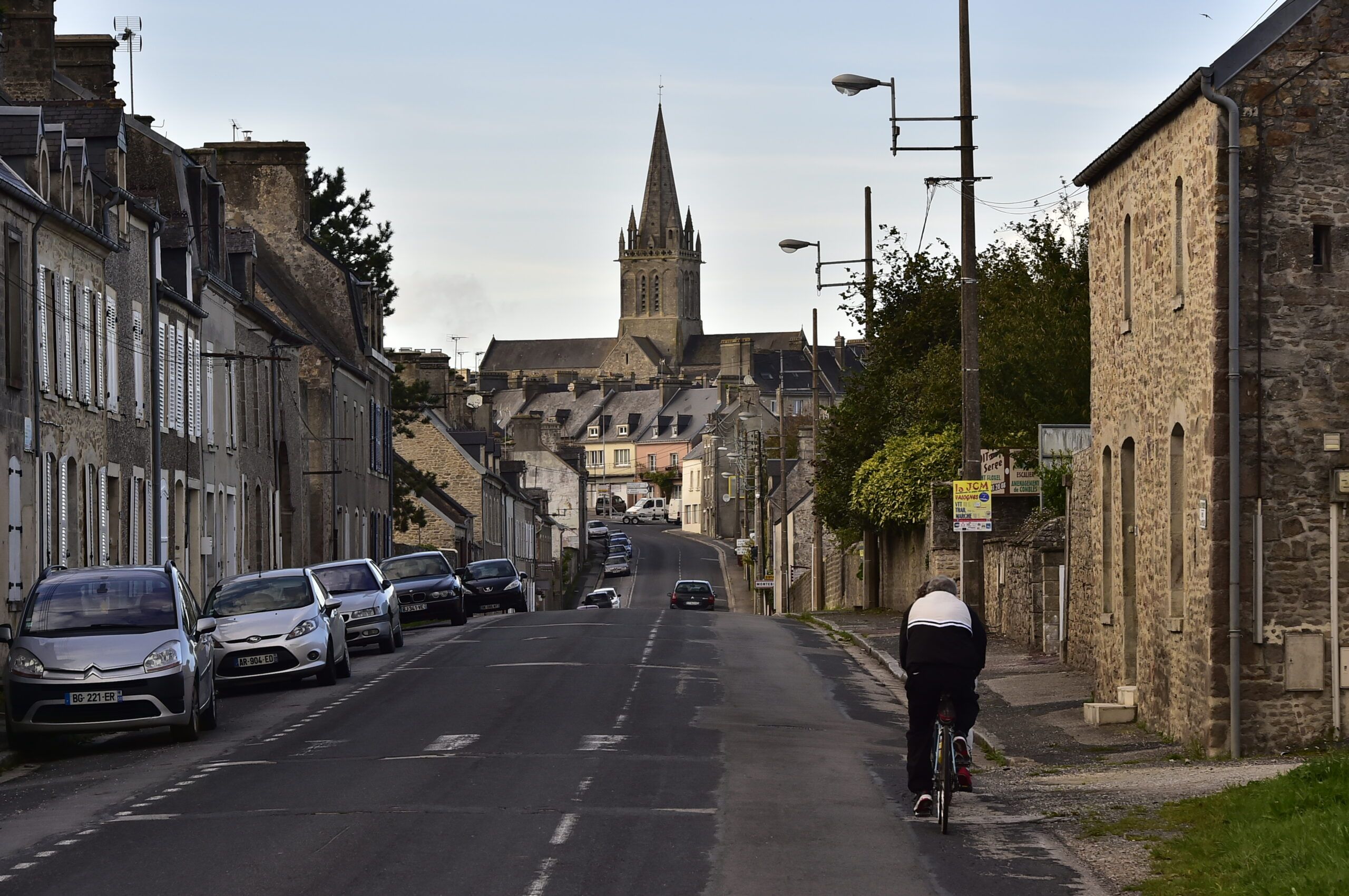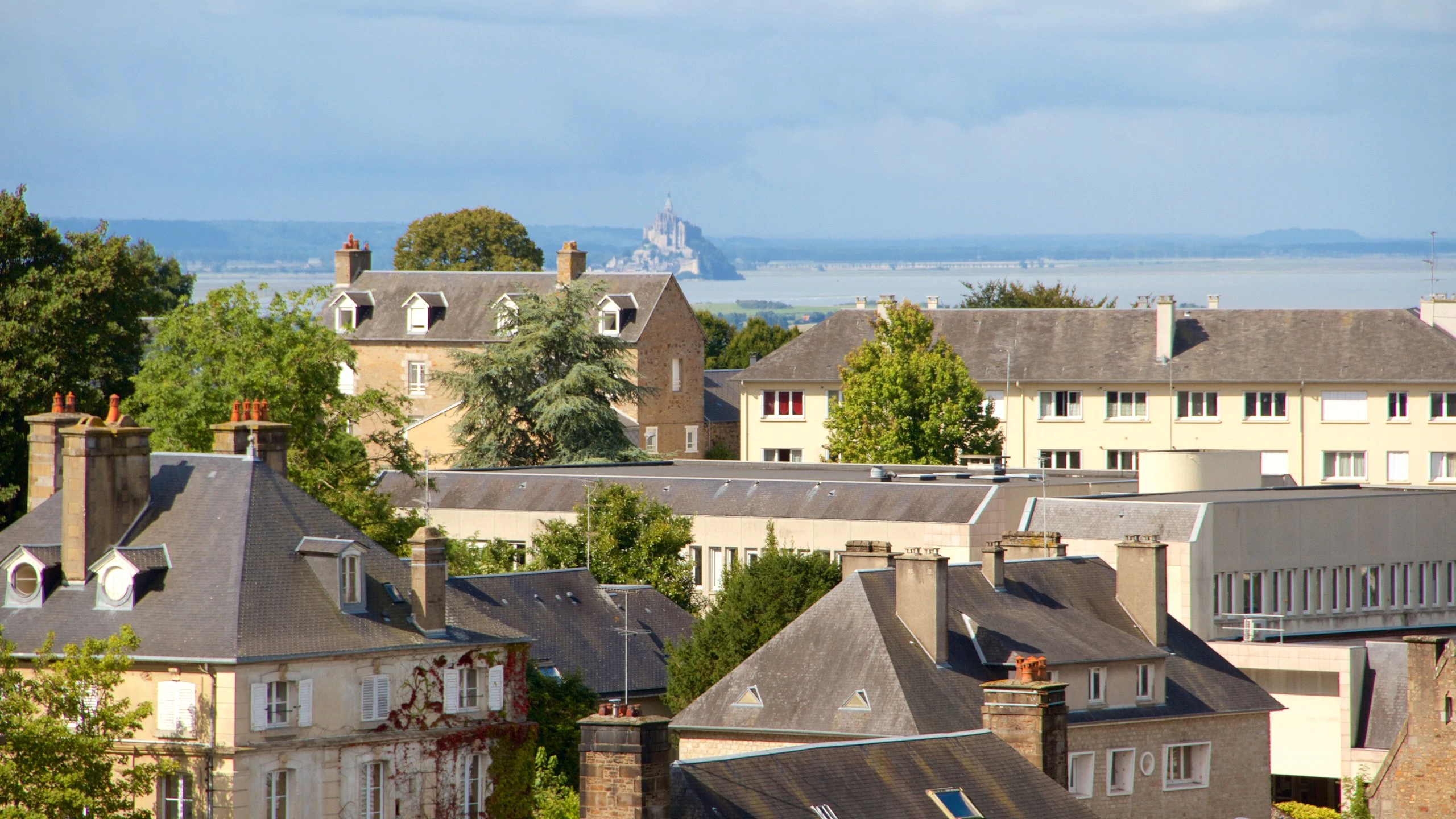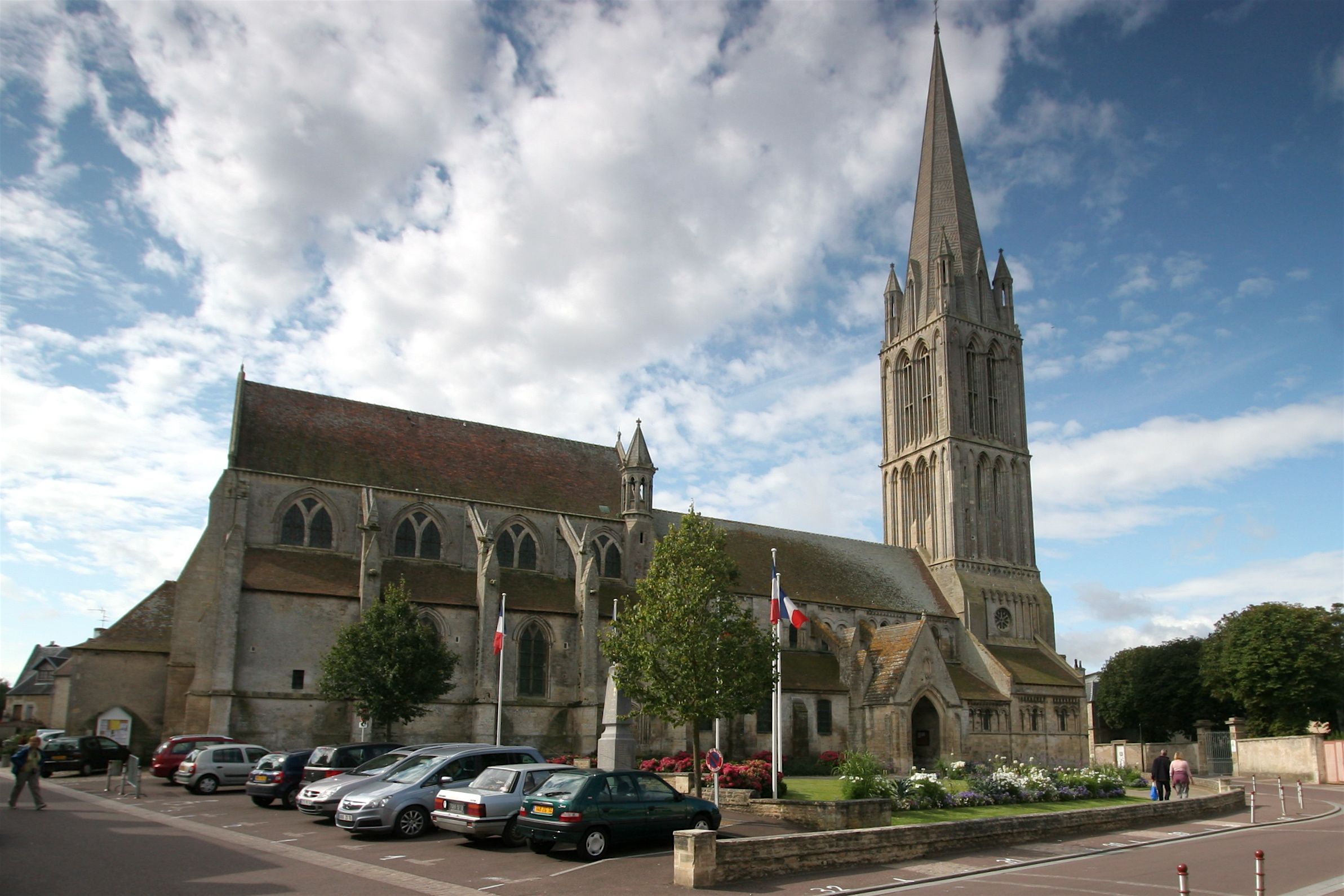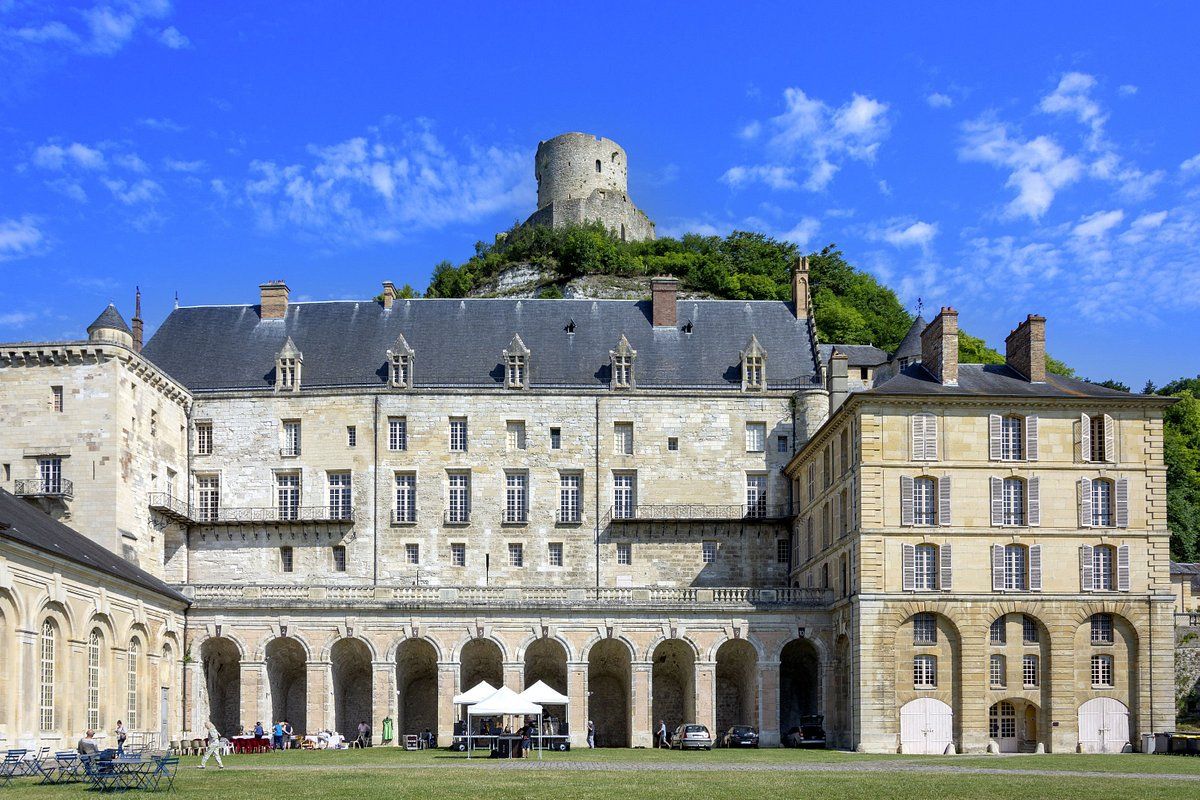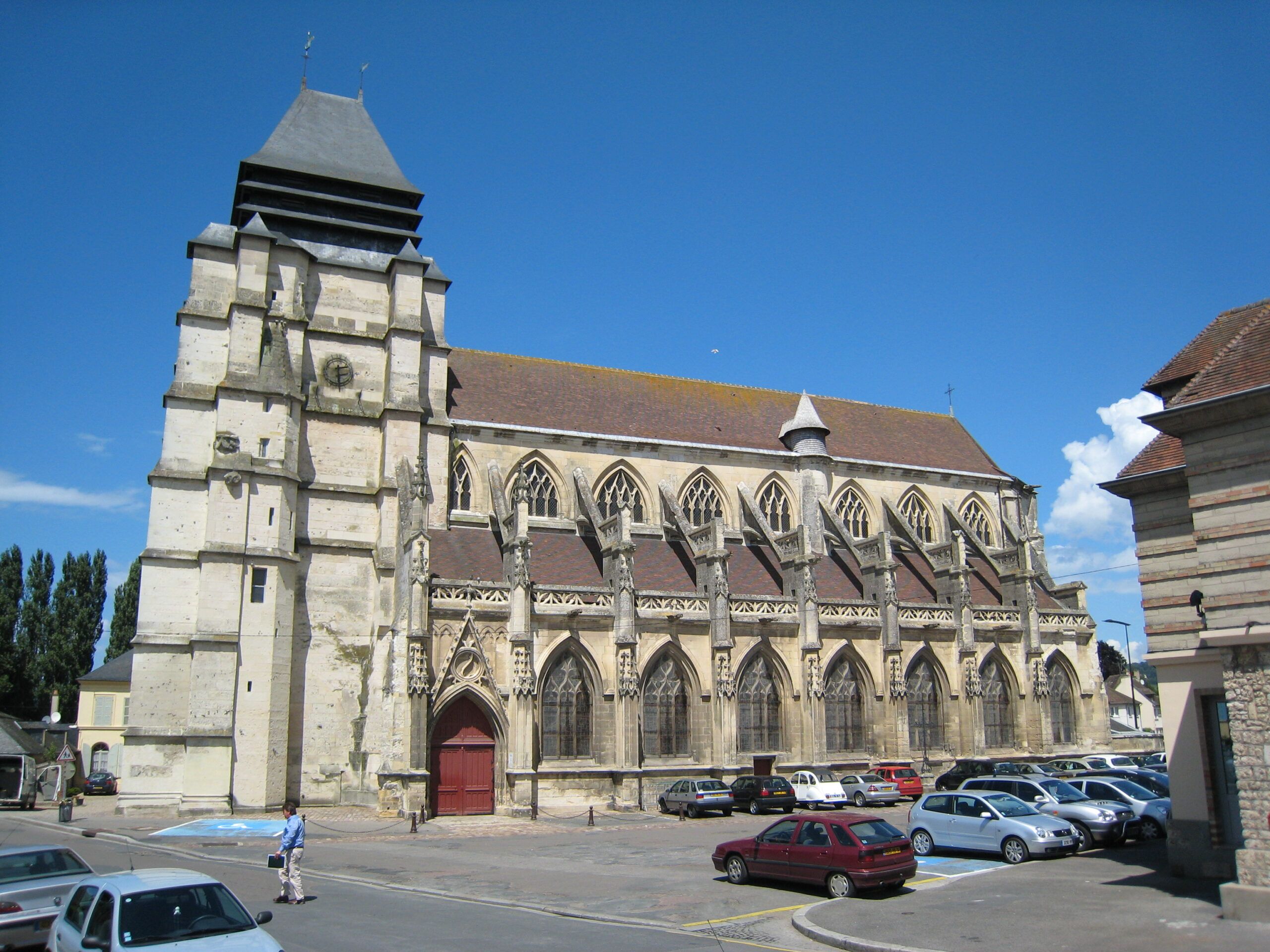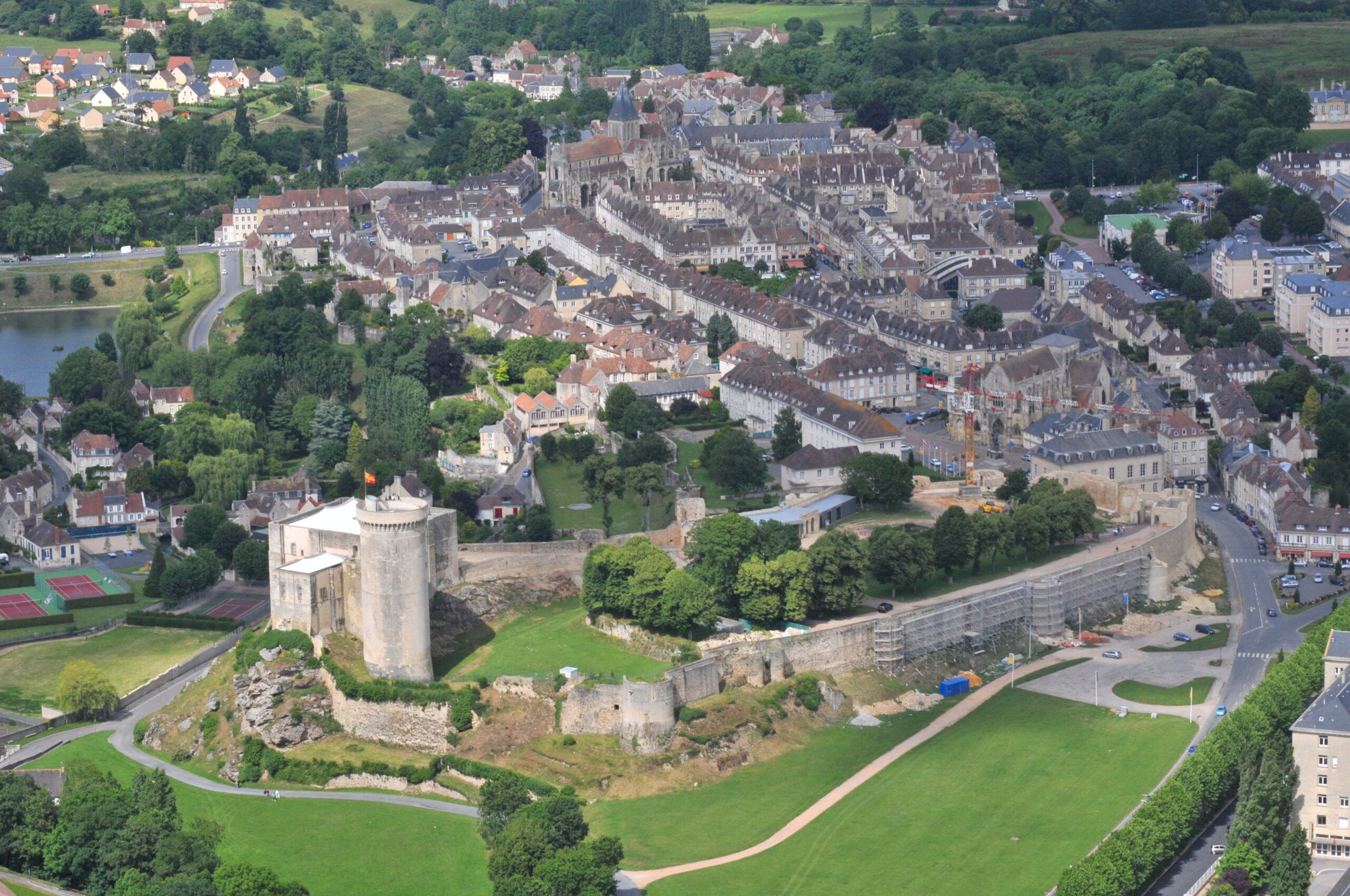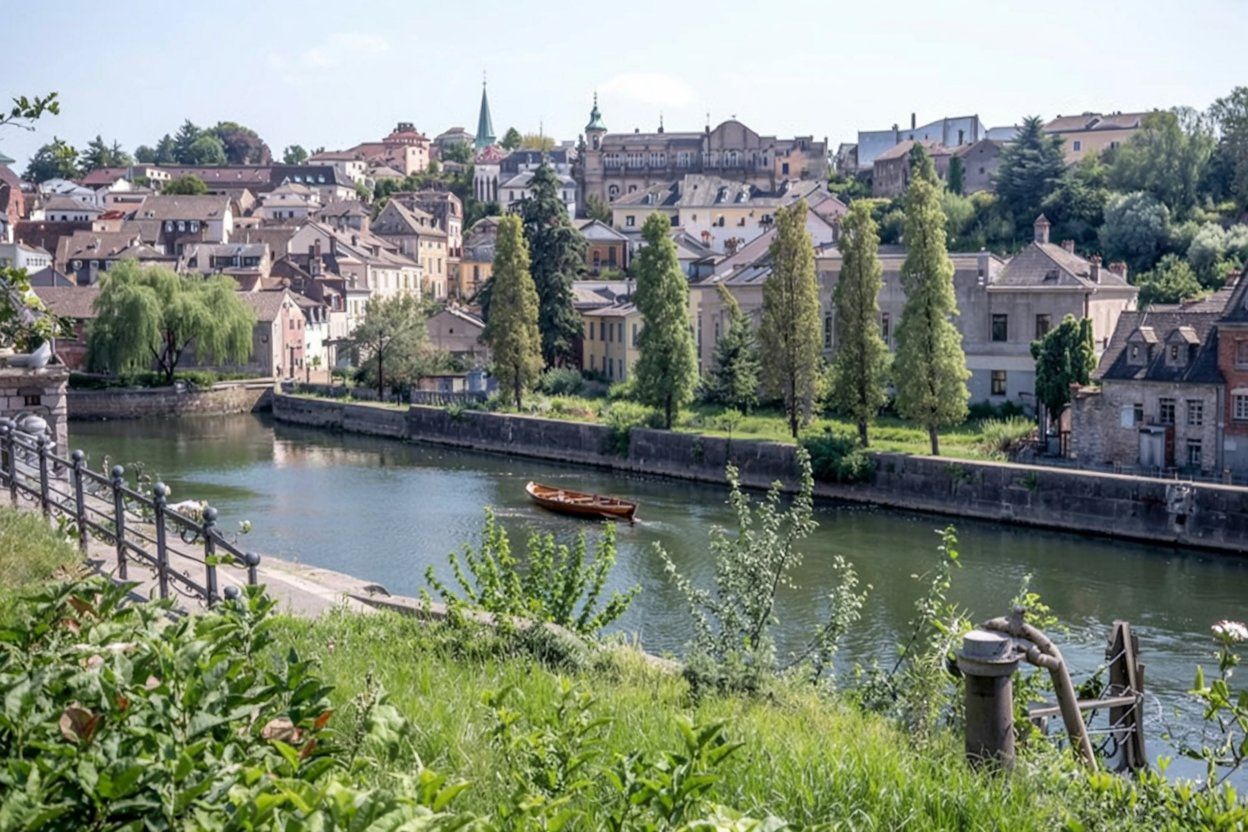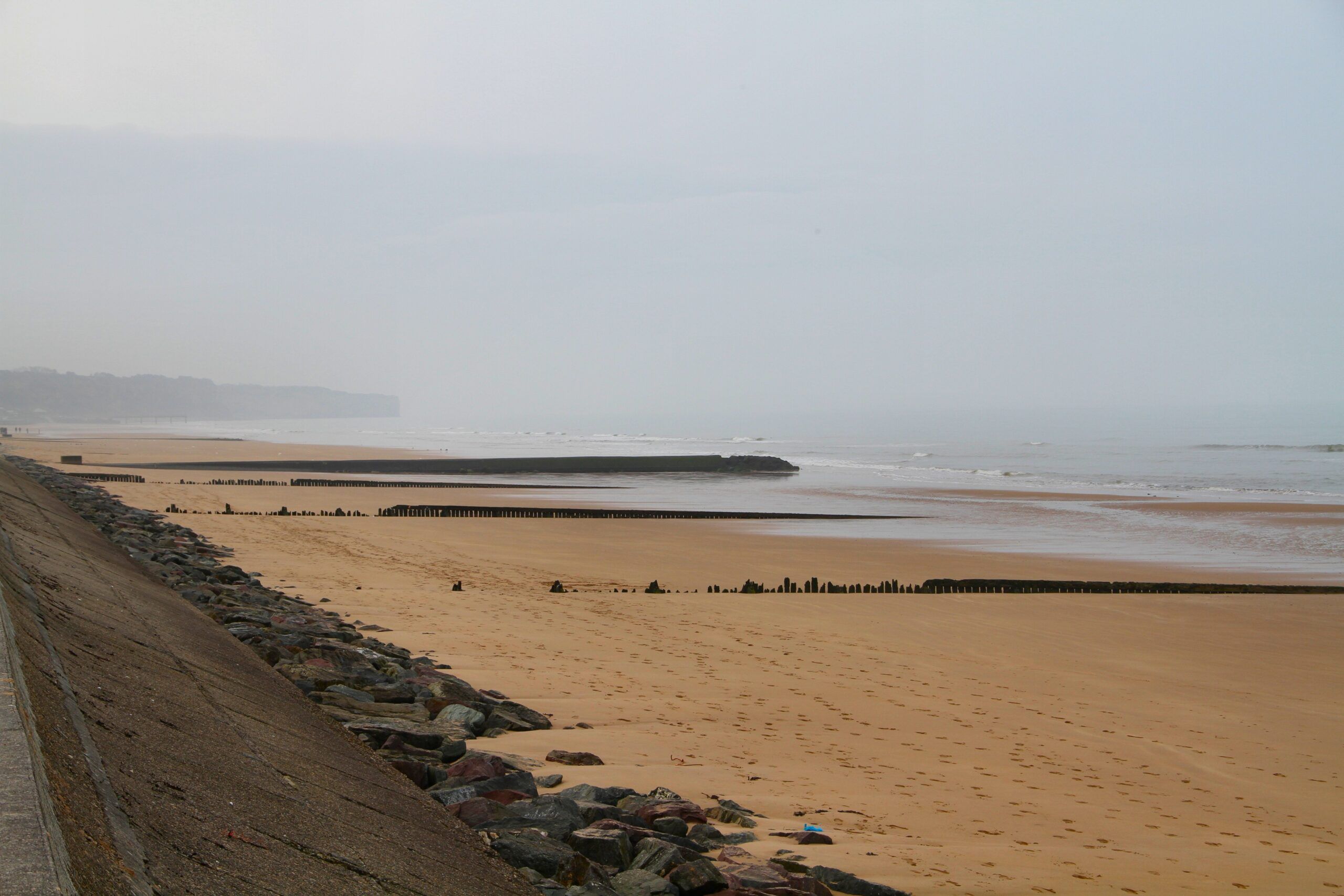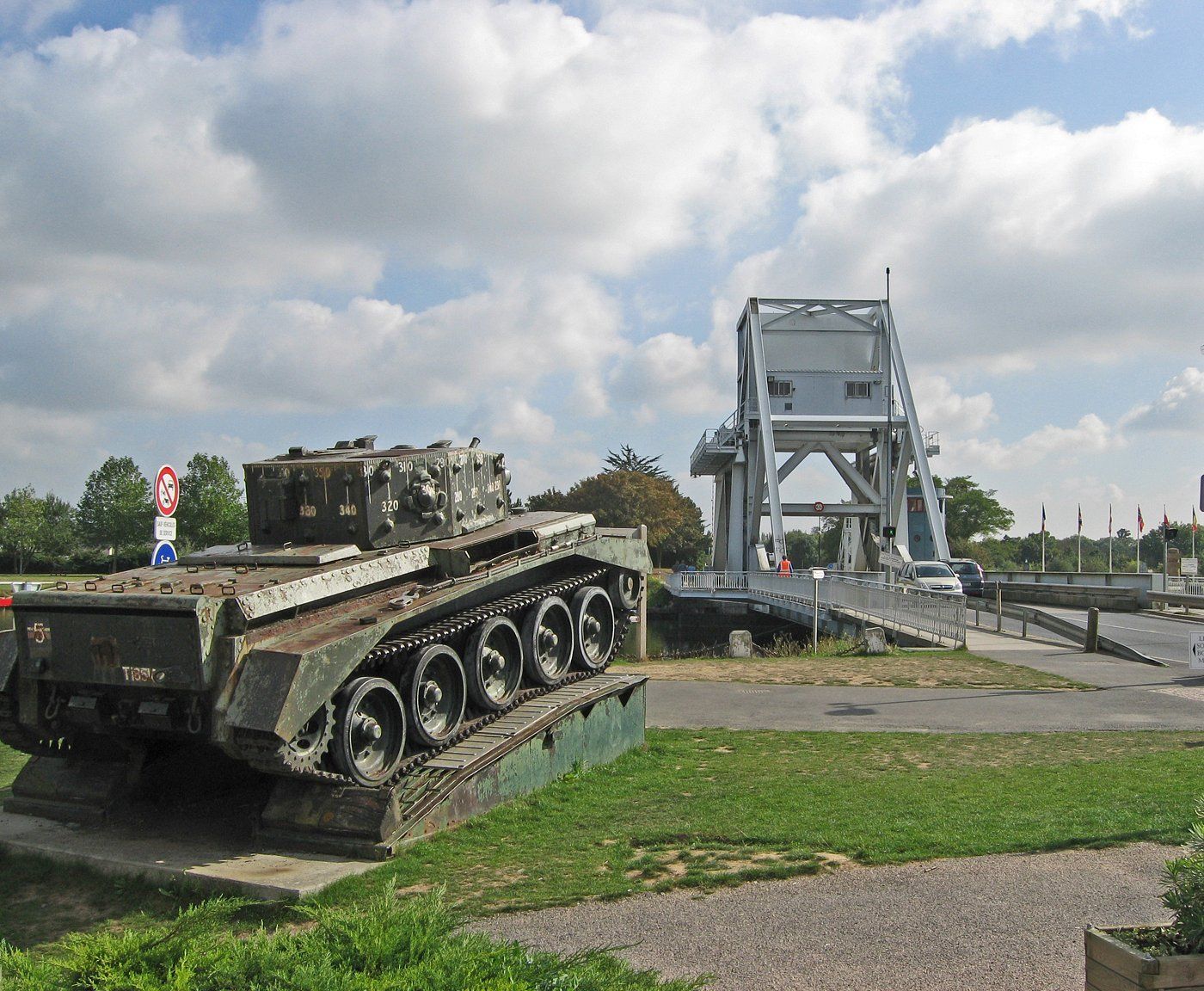La Cambe is a small Normandy town with deep ties to D-Day and World War II. While most people flock to the famous American landing beaches, La Cambe gives you a different, often overlooked, angle on the Battle of Normandy. It’s home to one of six German military cemeteries in Normandy, where almost 21,300 German soldiers are buried—an important site for grasping the full human toll of the war.
Visit La Cambe today and you’ll find a quiet Norman village where everyday French rural life continues in the shadow of its solemn history. The cemetery covers 10.5 hectares and really stands out compared to the Allied memorials along the coast. If you want a more complete picture of the region’s wartime story, La Cambe’s a must-see.
Visit Recommended D-Day historic hotels and B&Bs along the invasion beaches.
La Cambe also makes a handy base for exploring other D-Day sites in Normandy. The landing beaches, museums, and memorials are all within a short drive. Even if you only have a day, including La Cambe will add a lot of depth to your understanding of this pivotal moment in World War II.
Historical Overview of La Cambe During World War II
La Cambe played a key role during the 1944 Battle of Normandy. This small French town became a focal point for military operations and stands as a sober reminder of the war’s impact.
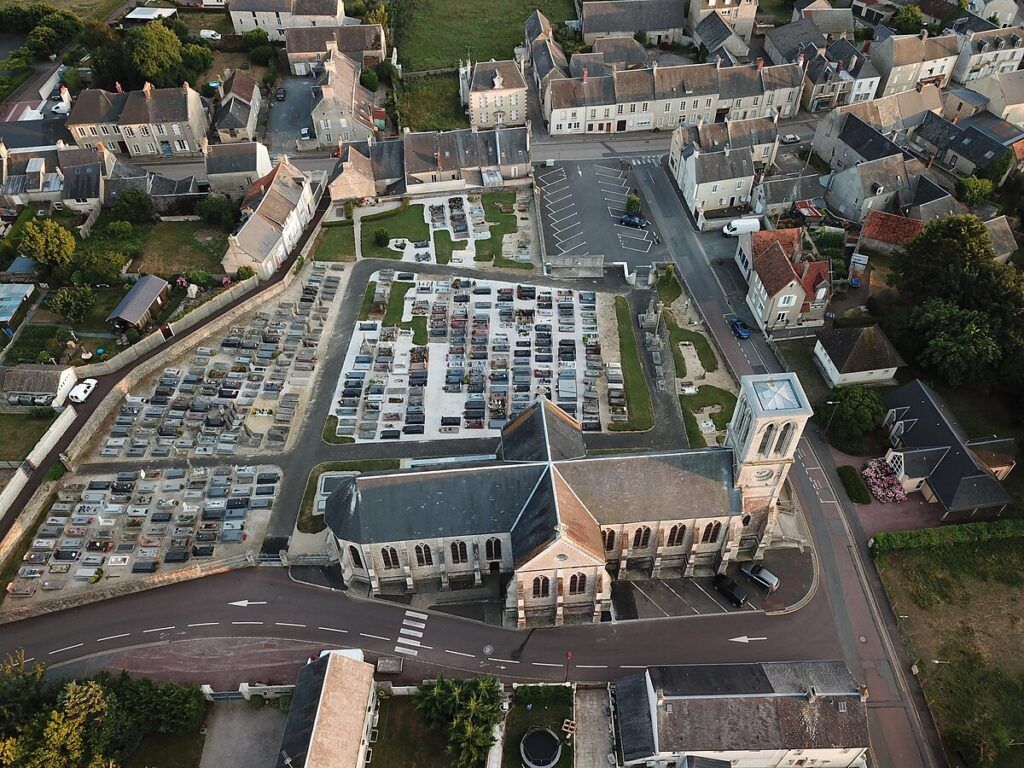
Strategic Importance in the D-Day Landings
During Operation Overlord, La Cambe’s spot near National Highway 13 made it a valuable target. The 175th Infantry Regiment, 29th Infantry Division, had the job of capturing the town. Colonel Paul R. Goode led the way as American troops pressed inland from the beaches.
La Cambe sits roughly 6 miles from Omaha Beach, so it was a key objective for the Allies. German forces used it as a transportation hub to move reinforcements and supplies to their coastal defenses.
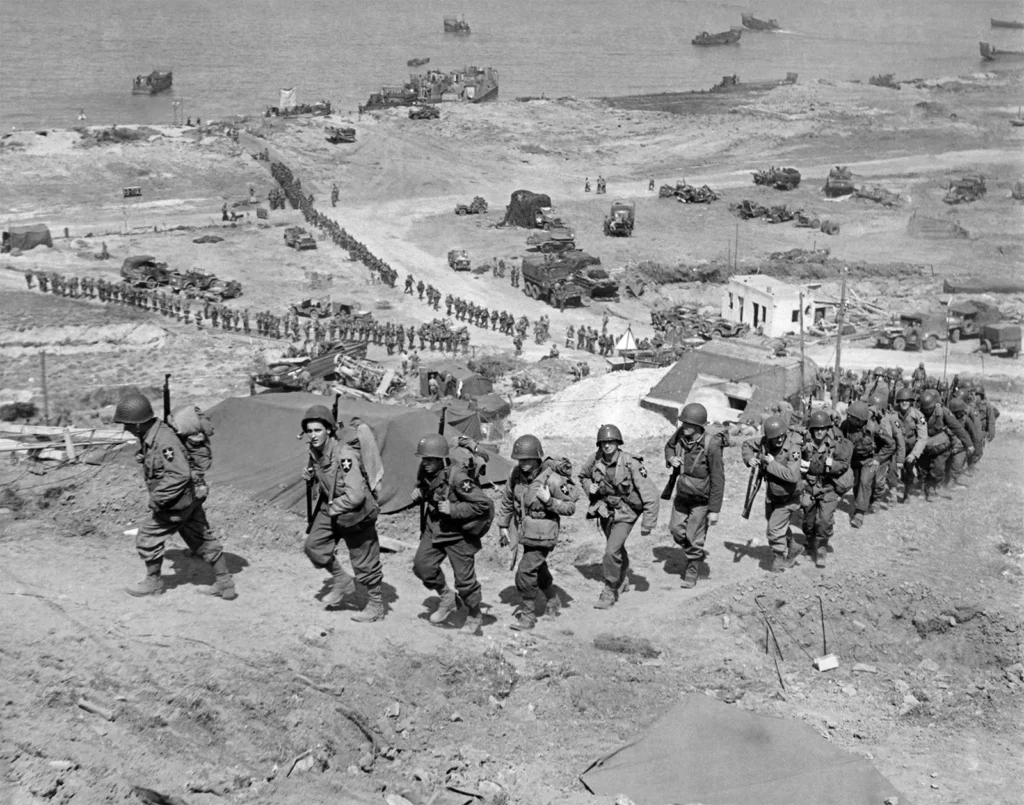
If the Allies could control La Cambe, they could:
- Cut German supply routes
- Establish a foothold for further advances
- Block German counterattacks from inland
German Forces and Military Operations
German units heavily defended La Cambe as part of the Atlantic Wall. The town was inside the defensive zone of the 352nd Infantry Division, a unit with experience from the Eastern Front.
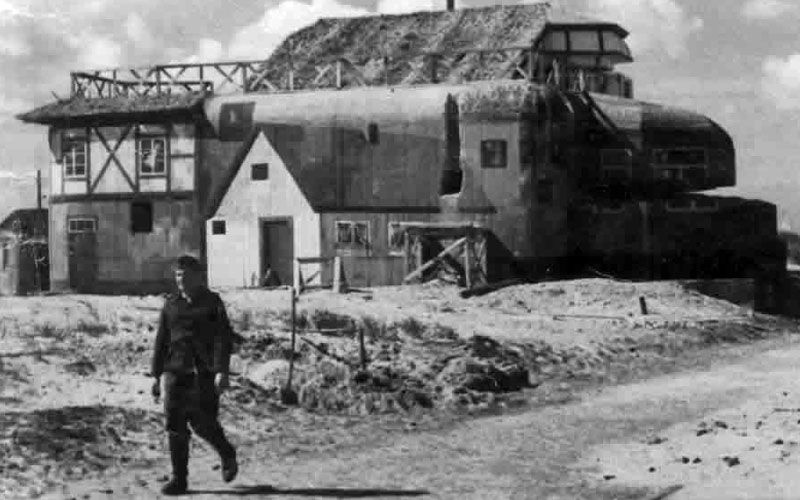
They’d set up defensive positions all over, including:
- Concrete bunkers covering key approaches
- Artillery positions aimed at the beaches
- Anti-tank obstacles on major roads
The fighting in and around La Cambe got intense. German soldiers dug in and fought stubbornly as the Allies advanced. The battle dragged on through June and July 1944, part of the bigger Normandy campaign.
Impact on Local Population
La Cambe’s residents endured a lot during the occupation and the battle. When the fighting started, many civilians found themselves caught between advancing Americans and retreating Germans.
Homes and farms took heavy damage from artillery and bombing. Even the local church, the heart of the village, didn’t escape.
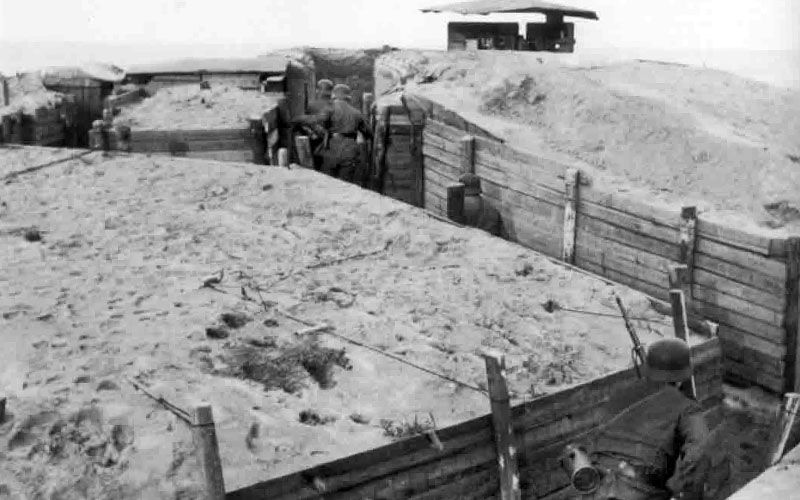
Most locals had to evacuate or hide in cellars during the worst of it. Food shortages grew severe as supply lines broke and farming stopped.
After liberation, the town faced the huge challenge of rebuilding. Today, the German War Cemetery is the most visible connection to La Cambe’s wartime past, with over 21,000 German soldiers buried there.
The D-Day Landings and Operation Overlord
Operation Overlord was the code name for the massive Allied invasion of Normandy on June 6, 1944. This campaign changed the course of World War II and kicked off the liberation of Western Europe from Nazi control.
Allied Forces and Key Objectives
The D-Day invasion brought together troops from the US, Britain, Canada, and other Allies. Over 156,000 soldiers landed on Normandy’s beaches, backed by nearly 7,000 ships and over 11,000 aircraft.
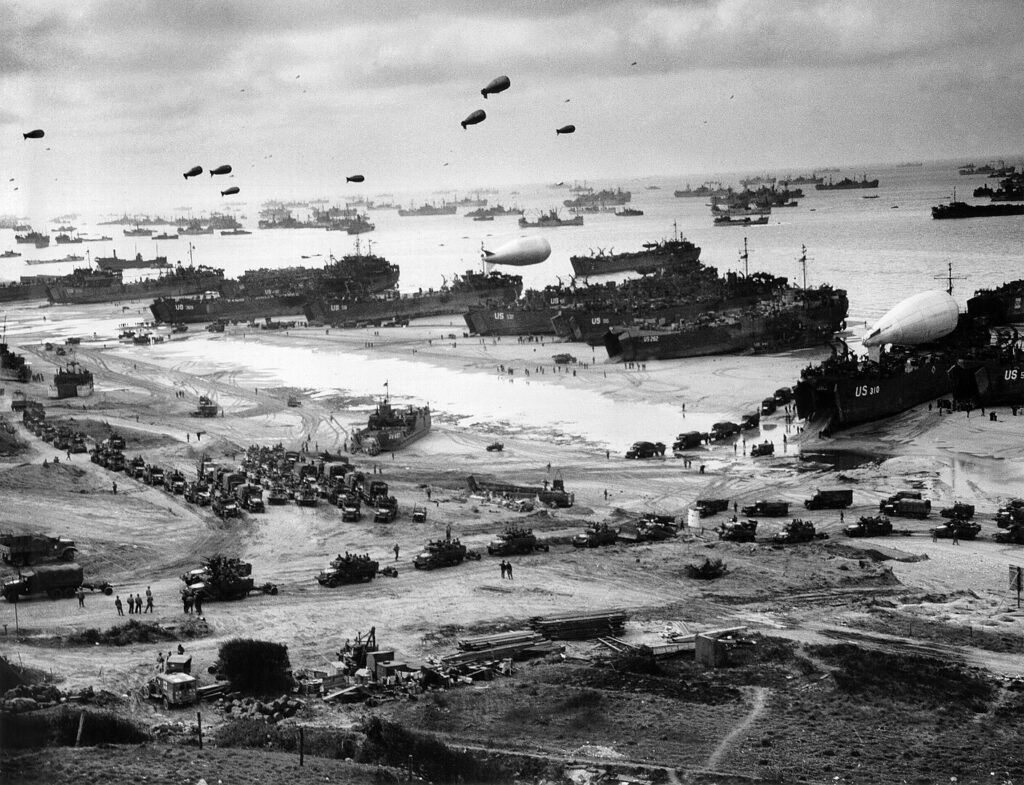
Main goals of Operation Overlord:
- Gain a foothold on the continent
- Set up supply lines for future operations
- Push inland and free key towns like Bayeux
- Start the drive east toward Germany
General Dwight D. Eisenhower was Supreme Commander of the Allied Forces. The invasion took years to plan, with plenty of deception and the biggest amphibious assault in history.
Weather nearly derailed everything, but Eisenhower made the call to go ahead, despite the rough forecast.
Major Landing Beaches and Their Significance
The invasion focused on five main beaches, each with its own code name:
| Beach Name | Allied Forces | Significance |
|---|---|---|
| Utah | American | Westernmost beach, lighter resistance |
| Omaha | American | Heaviest German defenses, highest casualties |
| Gold | British | Key to capturing Bayeux |
| Juno | Canadian | Connected British sectors |
| Sword | British | Closest to Caen, a major objective |
Omaha Beach was the bloodiest, with Americans facing steep cliffs and heavy fire. Utah Beach saw lighter resistance.
British and Canadian troops at Gold, Juno, and Sword made good progress inland on day one.
Aftermath and Long-Term Effects
By the end of D-Day, the Allies had landed over 130,000 troops in Normandy. Casualties were high—about 10,000 Allied casualties and 4,414 confirmed dead—but they’d secured a crucial foothold.
Within a week, the Allies linked all five beachheads and brought in more than 326,000 troops, 50,000 vehicles, and 100,000 tons of supplies. This effort paved the way for Paris’s liberation by August 1944.
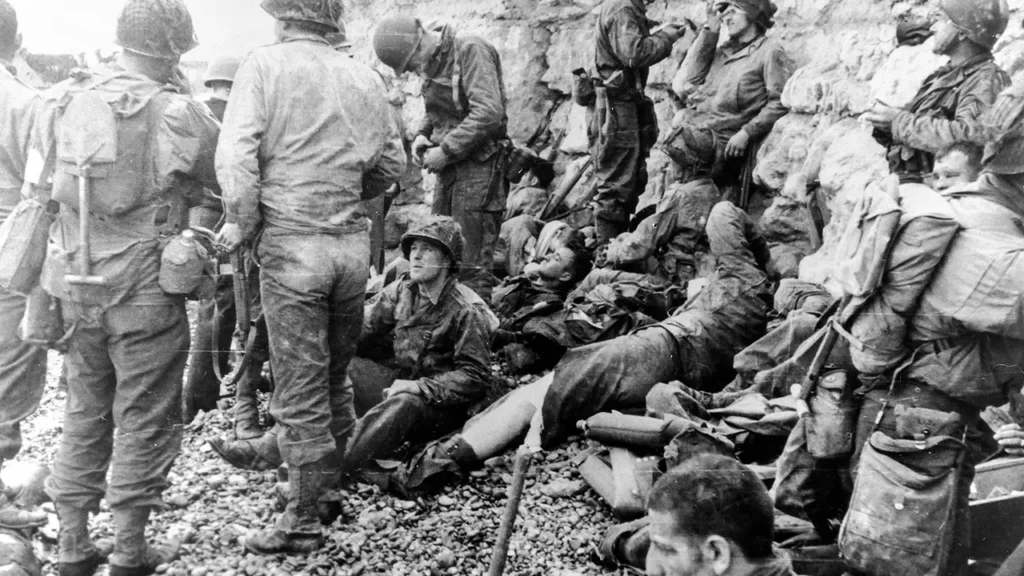
Operation Overlord marked the start of Nazi Germany’s downfall. Hitler had to split his forces between the Eastern and Western fronts.
These beaches are now hallowed ground, dotted with memorials and cemeteries that honor those who fought and died here.
La Cambe German Military Cemetery
The La Cambe German Military Cemetery is the largest German WWII cemetery in France, with over 21,000 graves of soldiers from the Normandy campaign. It’s just a few kilometers from Omaha Beach and offers a different perspective on the human cost of war.
Stay steps from Omaha Beach and historic landmarks. Best rates on local accommodations.
Site History and Design
La Cambe started out as an American battlefield cemetery where both American and German soldiers were buried side by side. After the war, the American remains were moved to the American Cemetery at Colleville-sur-Mer or sent home.
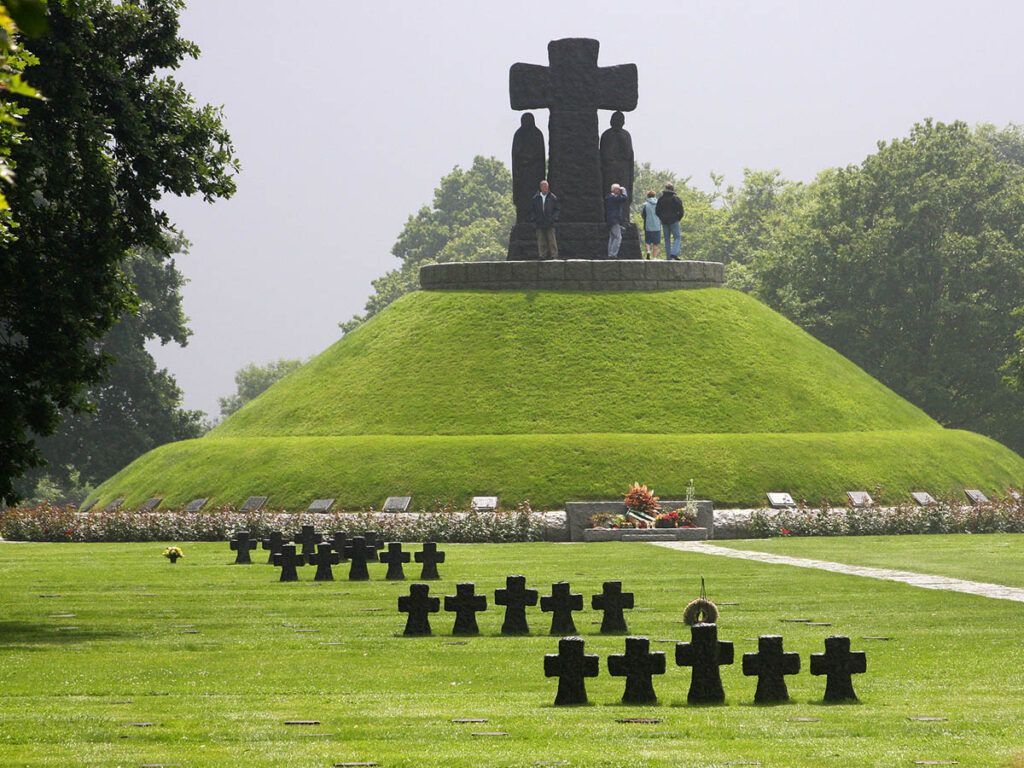
Germany officially took over the site in 1961. You’ll notice clusters of flat stone markers under maple trees, and a large mound (tumulus) with a basalt cross in the center, rising 4.5 meters high.
Markers lie flat in groups of five, giving the cemetery a somber, almost understated look—very different from the more regimented Allied cemeteries. The design is simple, meant for quiet reflection.
War Dead and Commemoration
The cemetery holds the remains of 21,222 German soldiers from June to August 1944. Many were just teenagers or in their early twenties.
Some notable burials:
- Michael Wittmann, a well-known Panzer commander
- 296 unidentified soldiers
- 89 SS soldiers
- Men from various Wehrmacht units
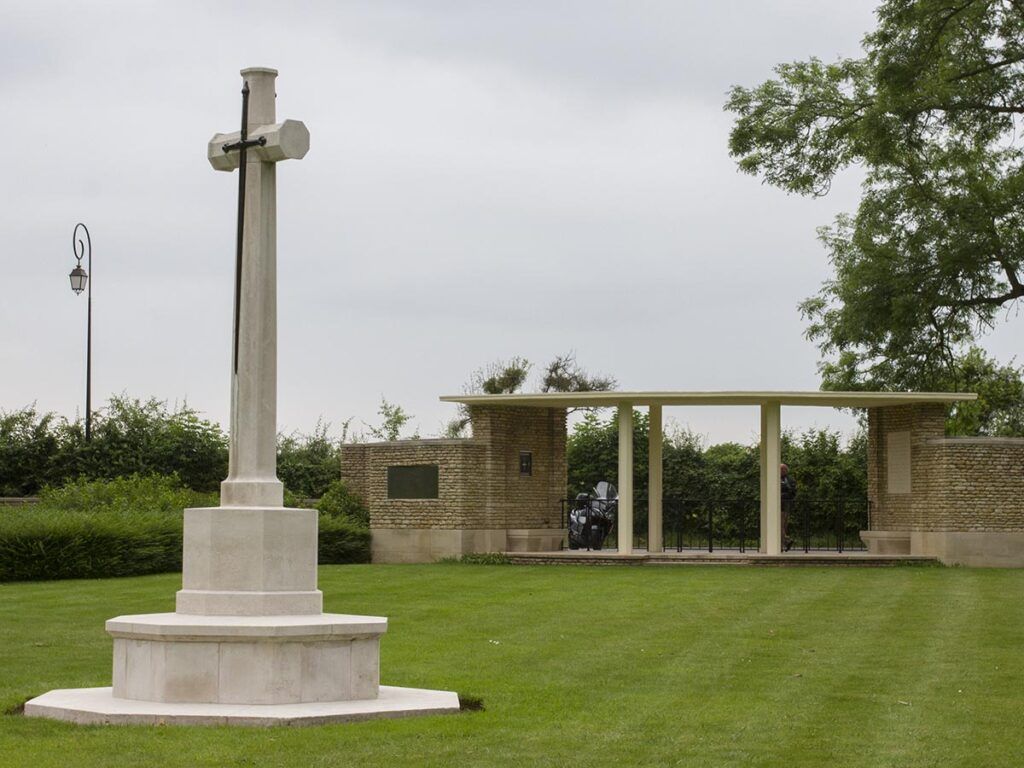
Each stone lists two names. Many markers just say “Ein Deutscher Soldat” (A German Soldier), as the identities are unknown. The visitor center keeps detailed records on those buried here.
The German War Graves Commission runs the site and organizes annual memorial events.
Symbolism of Peace and Reconciliation
La Cambe stands as a symbol of reconciliation. The entrance has a peace garden with thousands of maple trees, planted through the “Trees for Peace” project.
You can sponsor a tree, with proceeds funding international youth programs that focus on peace and understanding. These bring together young people from countries once at war.
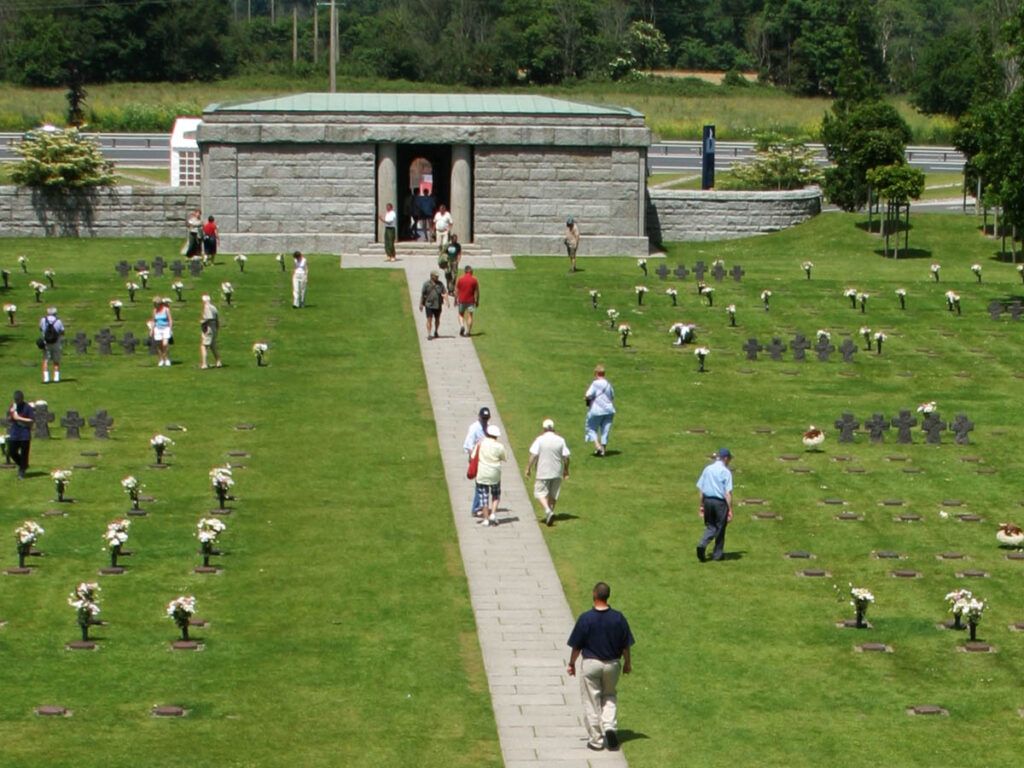
A stone at the entrance sums it up: “The endless rows of graves are a reminder of war’s consequences and the importance of peace.”
Unlike Allied cemeteries, which often highlight victory and sacrifice, La Cambe focuses on the tragedy of war and our shared humanity. The site quietly asks you to reflect on war’s futility, not its glory.
Other Notable WW2 Sites Near La Cambe
La Cambe is surrounded by major World War II sites, each offering its own angle on D-Day and its aftermath. All are within easy driving distance and add layers to the Normandy story.
Normandy American Cemetery
The Normandy American Cemetery sits on a bluff above Omaha Beach in Colleville-sur-Mer, about 20 minutes from La Cambe. It covers 172 acres and contains the graves of 9,388 Americans who died in the Normandy campaign.
Rows of white crosses and Stars of David stretch across the immaculate grounds. There’s a memorial with maps, info on D-Day, and a reflecting pool that brings a sense of calm.
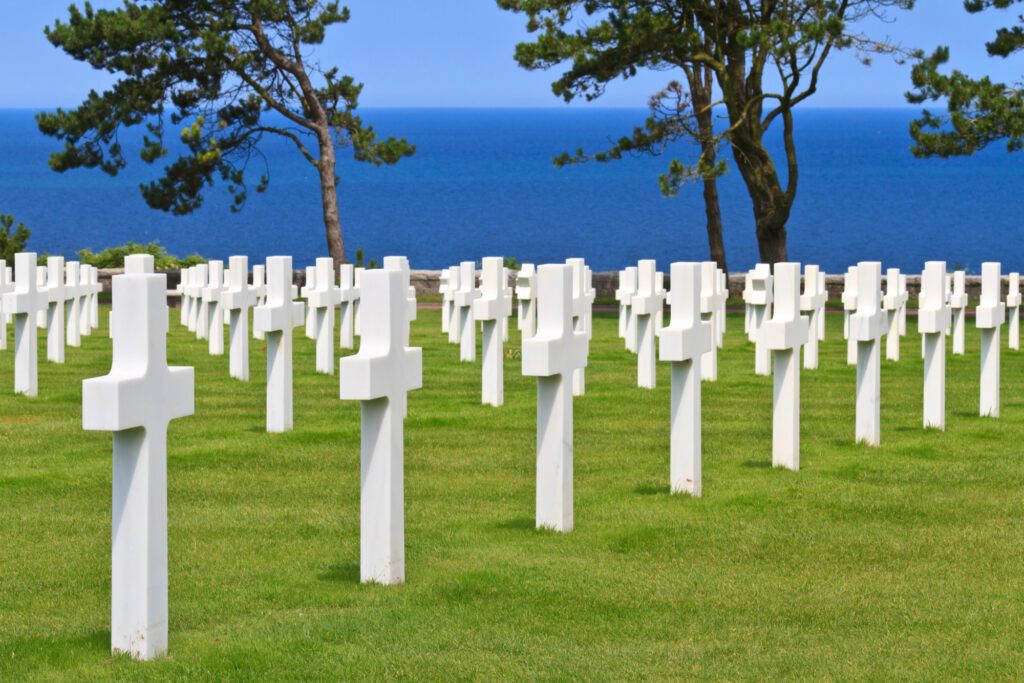
The Visitors Center has exhibits with personal stories, photos, and artifacts that really bring the sacrifice home. Many people find the place deeply moving.
Opening hours: 9am-5pm daily (closed December 25 and January 1) Entry: Free Time needed: 1-2 hours
Pointe du Hoc
Pointe du Hoc is one of the most dramatic D-Day sites, just 15 minutes from La Cambe. This cliff-top position held German guns that threatened both Omaha and Utah beaches.
On D-Day, U.S. Army Rangers scaled the 100-foot cliffs under fire. The site is still cratered from bombing, and several bunkers are intact. You can walk through these fortifications and look out from the same observation points German defenders used.
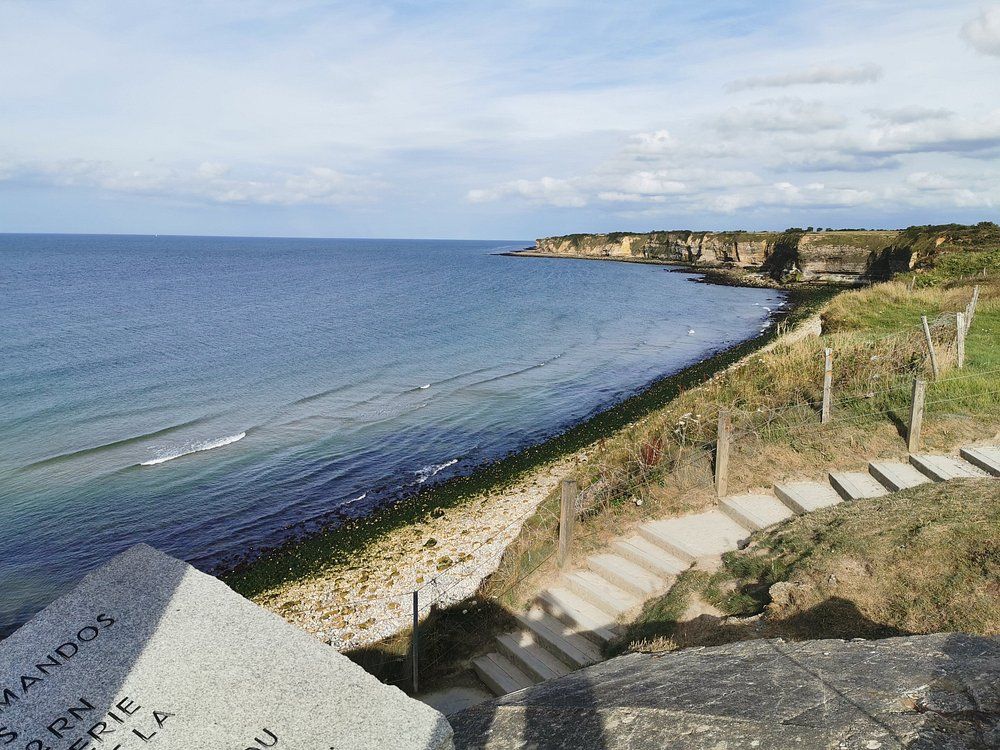
A modern visitor center tells the story through exhibits and film. The views are stunning, and the place really brings home the scale of the challenge.
Opening hours: 9am-6pm (April-September), 9am-5pm (October-March) Entry: Free Allow: 1 hour for a full visit
Juno Beach Centre
The Juno Beach Centre in Courseulles-sur-Mer, about 40 minutes away, is dedicated to Canada’s D-Day story. Opened in 2003, it’s the only Canadian museum on the Normandy coast.
Inside, interactive exhibits cover Canadian military efforts and civilian life during WWII. You’ll learn about the 14,000 Canadians who landed at Juno Beach, facing some of the toughest German defenses.
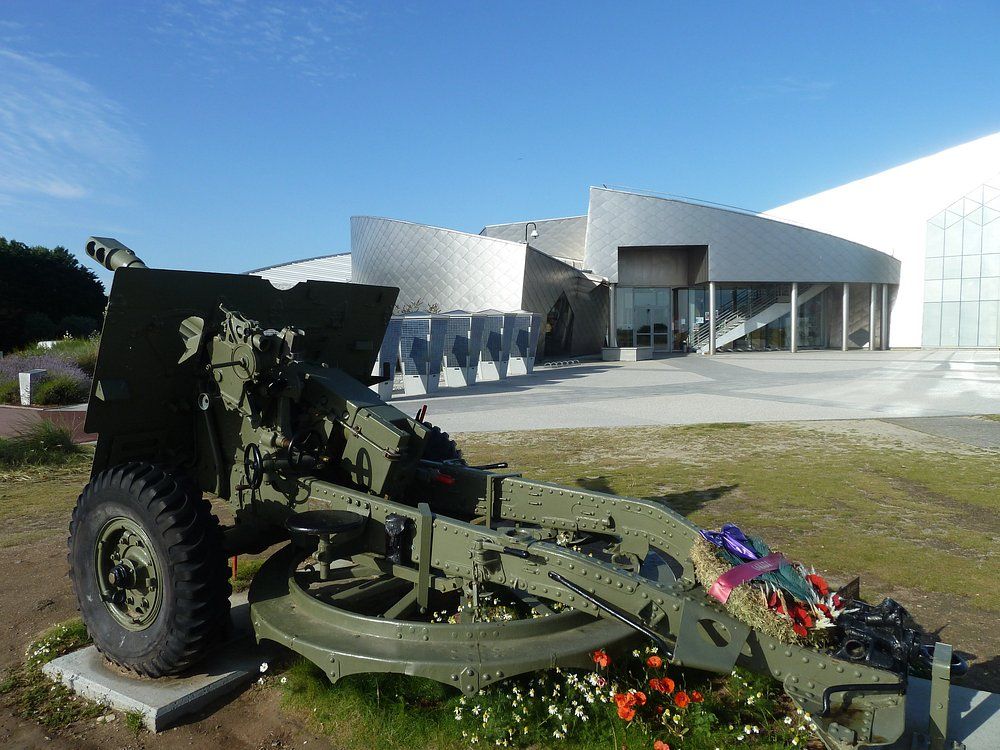
Guided tours take you to preserved German bunkers on the beach. The center mixes historical detail with personal stories, making Canada’s role in the liberation feel real and relevant.
In summer, the beach is peaceful, with families enjoying the same sand where soldiers once fought.
Opening hours vary by season Admission: €8.50 adults, €7.50 students, free for veterans Time needed: 2-3 hours
Modern-Day La Cambe: Culture and Community
La Cambe today is a small but resilient community, balancing its history with daily Norman life. The village keeps its rural charm and honors its past without letting it define everything.
Find the perfect base for exploring Utah Beach, Pointe du Hoc, and beyond.
Present-Day Life in the Village
About 600 people live in La Cambe, mostly in traditional stone houses and farmsteads. Many work in agriculture or commute to nearby towns.
Life centers around the village square, where you’ll find a bakery, a small grocery, and a café. The mairie (town hall) is the hub for local affairs.
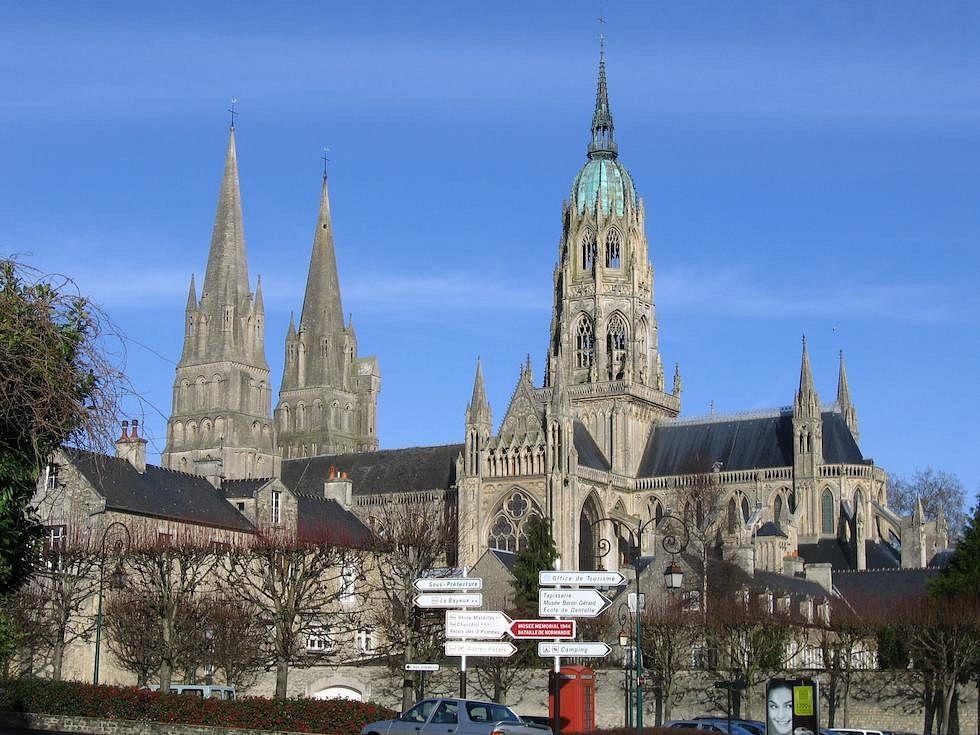
Want to see real Normandy? Explore by bike along quiet country roads connecting to neighboring villages.
Locals take pride in Norman architecture and customs, and many families have deep roots here. There’s a sense of continuity you can feel just walking around.
Annual Events and Commemorations
La Cambe holds several ceremonies each year. The main one is on June 6th—D-Day—when veterans, officials, and visitors gather at the German Cemetery for remembrance.
Memorial Day (late May) and Armistice Day (November 11) bring special events too, drawing international visitors who want to honor fallen soldiers and support peace.
There’s a summer festival in July, with local food, music, and Norman traditions. Visitors are always welcome.
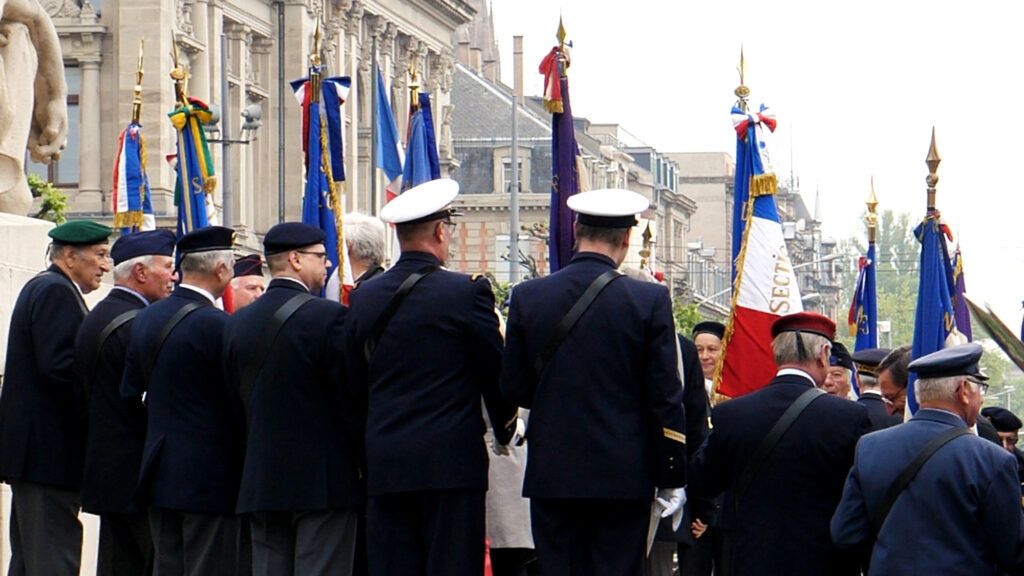
Harvest celebrations in autumn highlight the region’s farming roots, with displays of produce and old-school farming methods. It’s a real look at rural Norman life.
Peace-themed educational programs run year-round, especially for student groups visiting the cemetery. These focus on reconciliation and understanding.
See all available accommodations near La Cambe.
Planning Your Visit to La Cambe
La Cambe gives you a meaningful WWII experience and a taste of rural Normandy. With a little planning, you can make your visit count.
How to Get There
La Cambe sits about 8 miles (13 km) from Bayeux and 30 miles (48 km) from Caen. Here’s how you can get there:
By Car: Renting a car is easiest. From Paris, take the A13 to Caen, then N13 toward Cherbourg, exit at La Cambe. The drive is about 3-3.5 hours from Paris.
By Train: Take a train to Bayeux from Paris (2-2.5 hours), then taxi or local bus to La Cambe (about 20 minutes).
Guided Tours: Many D-Day tour companies run trips from Bayeux or Caen, usually including La Cambe German Cemetery and other sites.
See all available accommodations near La Cambe.
Recommended D-Day Tours:
- American D-Day Sites in Normandy Full-Day Tour
- American D-Day Sites in Normandy Half-Day Tour
- Half-Day Normandy WWII Sidecar Tour
- Full-Day US Battlefields of Normandy Tour
Local Buses: There’s limited public transport between Bayeux and La Cambe, but schedules can be tricky.
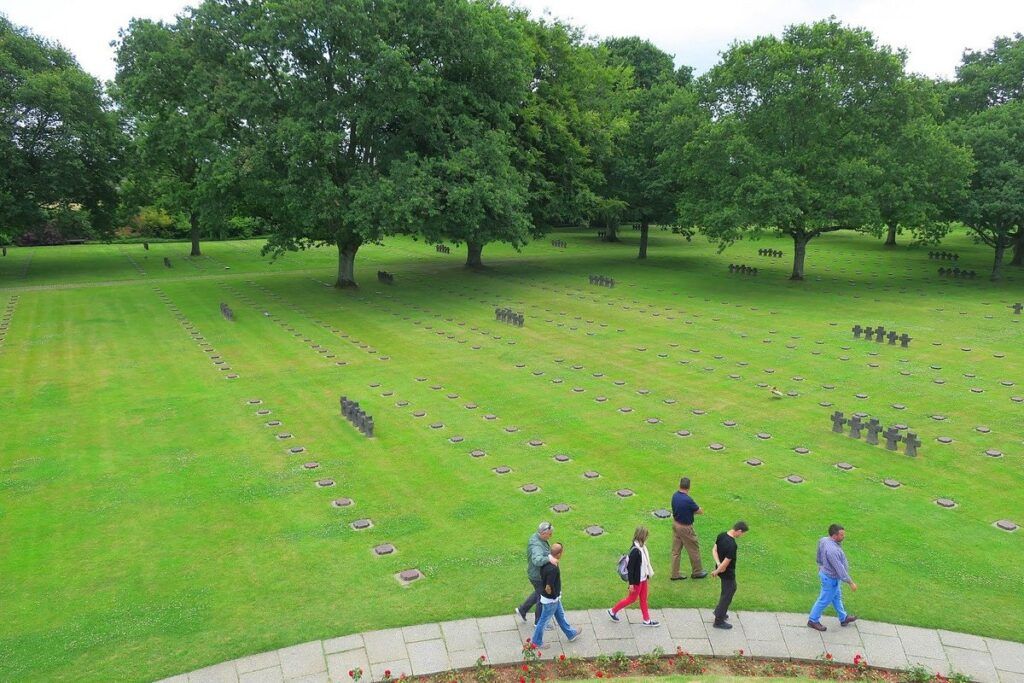
Recommended Itineraries
Half-Day Visit (3-4 hours):
- German Military Cemetery (1-1.5 hours)
- Village center (30 minutes)
- Lunch at a local café or restaurant (1 hour)
- Peace Garden (30 minutes)
Full-Day D-Day Experience:
- Morning: Start at La Cambe German Cemetery
- Midday: Head to Utah Beach (30-minute drive)
- Afternoon: Explore Pointe du Hoc (15 minutes from Utah Beach)
- Late afternoon: Return to La Cambe for reflection and dinner
See all available accommodations near La Cambe.
For a powerful comparison, visit both La Cambe and the American Cemetery at Colleville-sur-Mer (25 minutes away). Seeing both sites is eye-opening.
Best Times: Spring (April-June) or fall (September-October) are ideal—nice weather, fewer crowds. Early mornings are quietest at the cemetery.
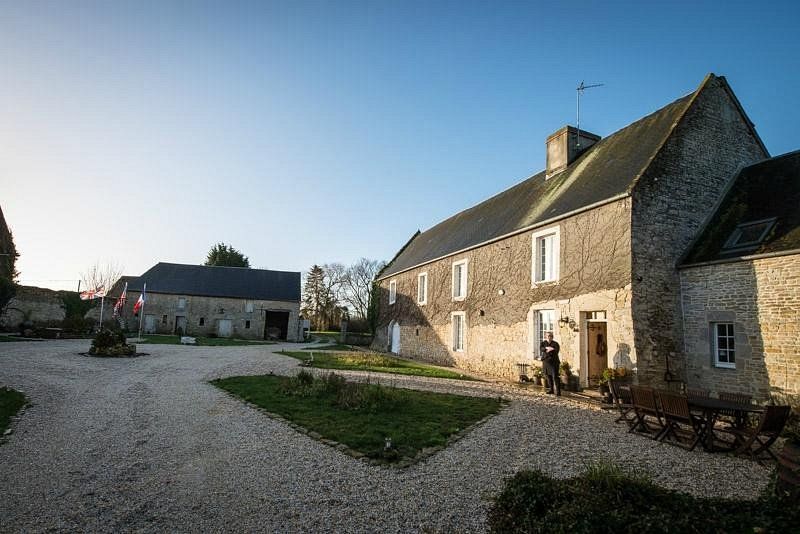
Cemetery Visitor Information
La Cambe German Military Cemetery is a place for reflection on the costs of war. With over 21,000 German soldiers buried here, it’s the largest German WWII cemetery in France.
Opening Hours and Accessibility
The cemetery is open daily, with these hours:
- April to September: 8:00 AM to 7:00 PM
- October to March: 8:00 AM to 5:00 PM
Entry is free. The grounds are wheelchair accessible, with paved paths connecting the main areas. Parking is available right at the entrance, with space for cars and tour buses.
There are restrooms near the entrance. A visitor center offers displays about the site and a small bookshop with guides and remembrance items.
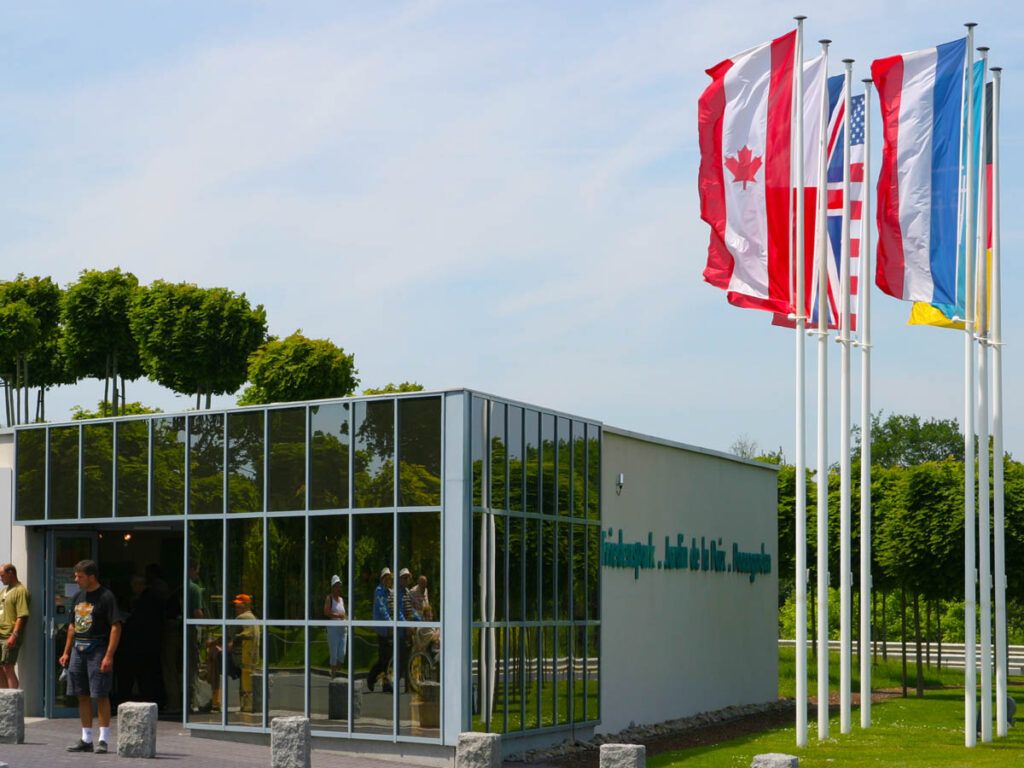
Guided Tours and Resources
You can visit La Cambe Cemetery on your own or book a guide. Private tours are available if you contact the cemetery’s office at least a week in advance. These last about 60-90 minutes and provide lots of historical detail.
Local tour companies also run combined D-Day cemetery tours that include La Cambe. Many of these have won awards for their educational value.
The visitor center hands out free maps and info pamphlets in multiple languages. You can rent audio guides for a small fee. There’s also a searchable database to look up info on individual soldiers buried here.
See all available accommodations near La Cambe.
Nearby Attractions and Day Trips
La Cambe is centrally located for exploring Normandy’s historical and cultural highlights. Plenty of great day trips are within reach.
Find comfortable stays within moments of historic battlegrounds
Bayeux and Its Tapestry
Bayeux is just 15 miles northeast and makes a great day trip. The main draw is the Bayeux Tapestry, a 230-foot embroidery showing William the Conqueror’s 1066 invasion of England.
The tapestry’s in its own museum, with English audio guides available. While you’re there, check out the Gothic Notre-Dame Cathedral, dating back to the 11th century.
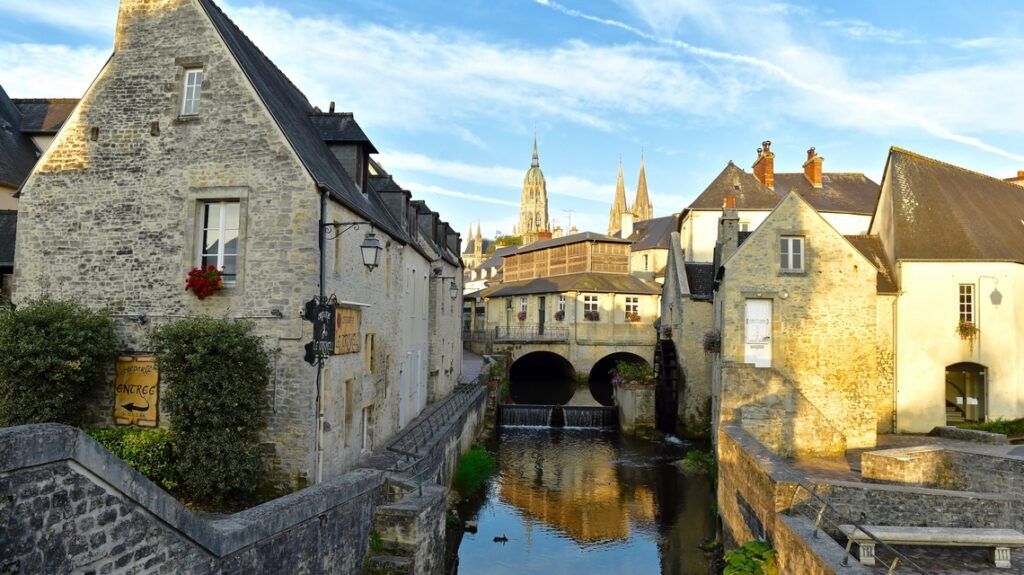
Bayeux also has the largest British WWII cemetery in France, with over 4,600 graves. Many D-Day tours start here, making it easy to reach other Normandy sites.
Exploring the Normandy Coast
The Normandy coast is more than just D-Day beaches. Within an hour’s drive, you can see some charming coastal towns.
Top picks:
- Honfleur (60 miles east) – Pretty harbor town with colorful buildings
- Étretat (80 miles northeast) – Dramatic white cliffs and natural arches
- Mont Saint-Michel (70 miles west) – Iconic island abbey and UNESCO site
The coast offers fresh seafood, cliffside hikes, and relaxing beaches. Renting a bike is a great way to explore at your own pace.
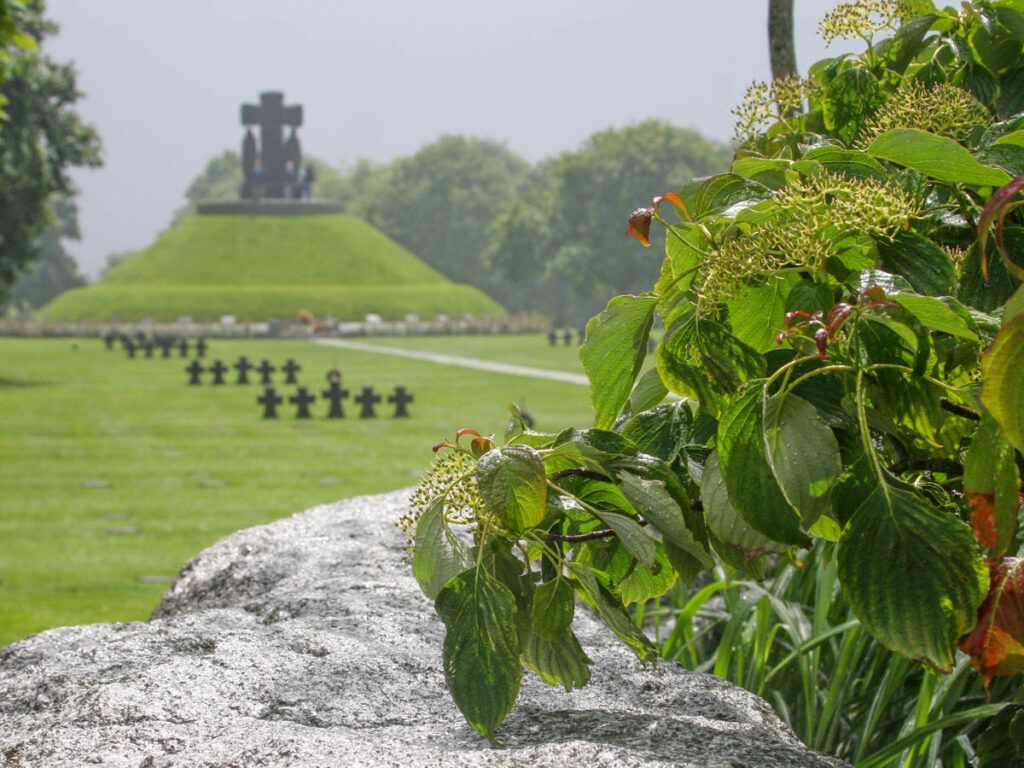
Train Travel to La Cambe and the Normandy Region
There’s no train station in La Cambe itself, so you’ll need to mix regional trains with local transport to get here. It’s not hard, just requires a bit of planning.
Options via Luxurious and Historical Trains
Normandy connects well to Paris by rail. The main route runs from Paris Saint-Lazare to Caen or Bayeux—the closest major stations. Paris to Bayeux takes about 2.5 hours on a direct train.
From Bayeux, grab a taxi or bus for the 20-minute ride to La Cambe. Regional trains run often, especially in summer.
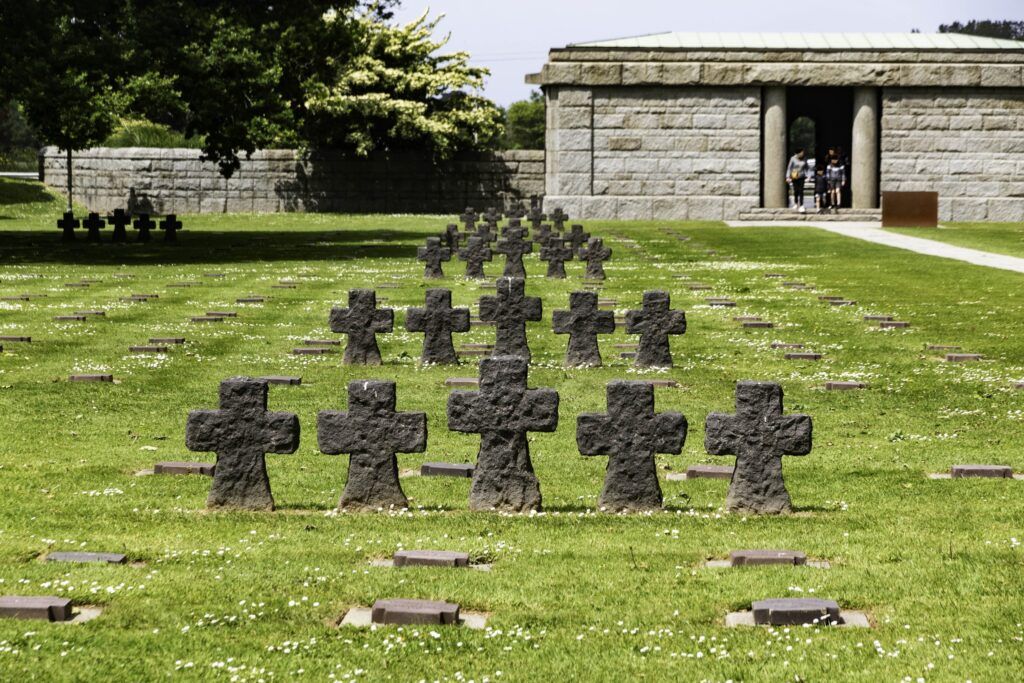
If you want something special, look for historical D-Day tour trains in peak season. These sometimes include onboard exhibits and expert narration about the Normandy campaign.
Travel Journalism and Travel Experiences
Plenty of travel writers have described the train journey to Normandy’s WW2 sites. There’s something about leaving Paris’s buzz and rolling into the peaceful countryside where D-Day happened—it’s a transition you feel.
The train ride is scenic, with farmland, villages, and coastal views that haven’t changed much since 1944.
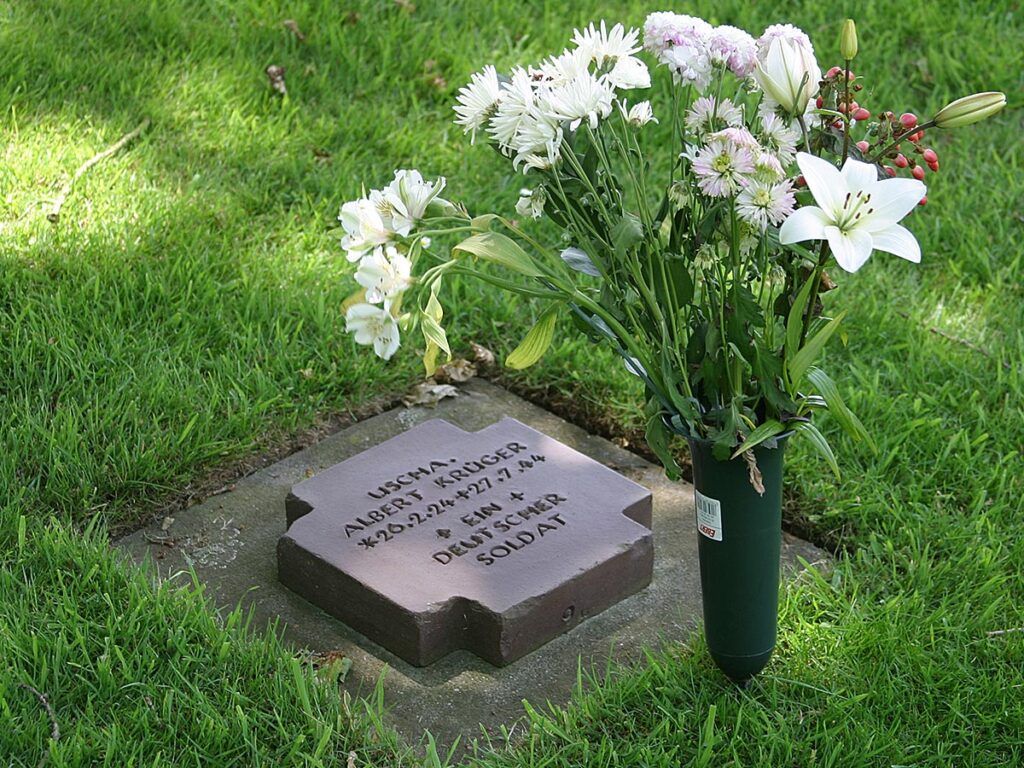
Many bloggers recommend staying a night or two in Bayeux before exploring La Cambe and other sites. Bayeux itself is a charming medieval base for your WW2 trip.
Bring your camera—views from the train are great, especially near the coast. The gradual arrival gives you time to reflect before visiting the sobering memorials.
Connecting With the History: Reflection and Legacy
La Cambe lets you engage with World War II history in a personal way—through reflection, education, and remembrance. It’s both a memorial and a place to learn, helping preserve military history that shouldn’t be forgotten.
From beachfront hotels to authentic French countryside stays. No booking fees.
Importance of Heritage and Remembrance
Visiting La Cambe German War Cemetery helps you see the human cost of war from all sides. It’s a place to reflect on the universal loss that conflict brings, no matter which flag someone fought under.
The cemetery’s design—dark stone markers, the central mound—creates an atmosphere that’s hard to shake. Many visitors leave with a new perspective.
The peace garden is especially moving, a living symbol of hope after tragedy. German families still come to honor ancestors, reminding us every grave has a story.
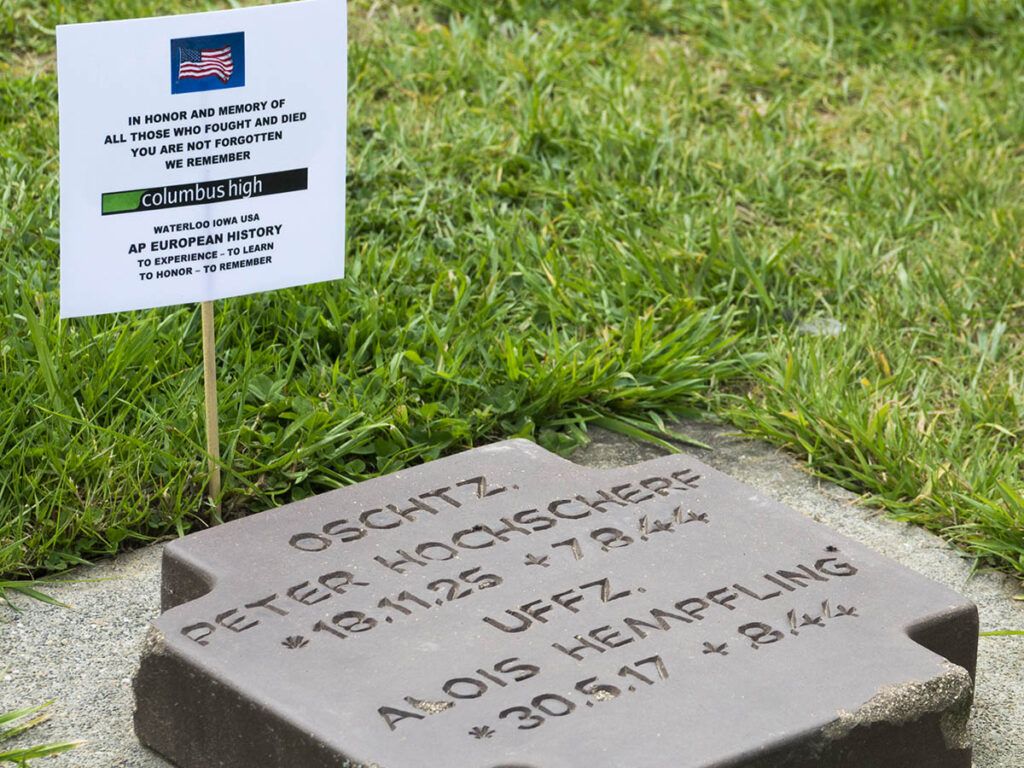
Educational Opportunities
The information center at La Cambe has photos, letters, and personal artifacts—real stories behind the numbers.
School groups visit as part of their history studies. Guided tours explain D-Day and the Battle of Normandy in ways that make sense for younger visitors.
Using the center’s resources, you can trace troop movements and get a clearer sense of how the battles unfolded. There are maps showing positions and advances.
They’ve got a digital database, too, so you can look up specific soldiers and units buried at La Cambe.
Resources for Further Exploration
Good info makes all the difference when planning a visit to La Cambe. Here are some resources to help you prepare and dig deeper into this historic area.
Official Websites and Guides
The German War Cemetery at La Cambe has an official site run by the German War Graves Commission (Volksbund Deutsche Kriegsgräberfürsorge). Head to volksbund.de for hours, visitor info, and historical background.
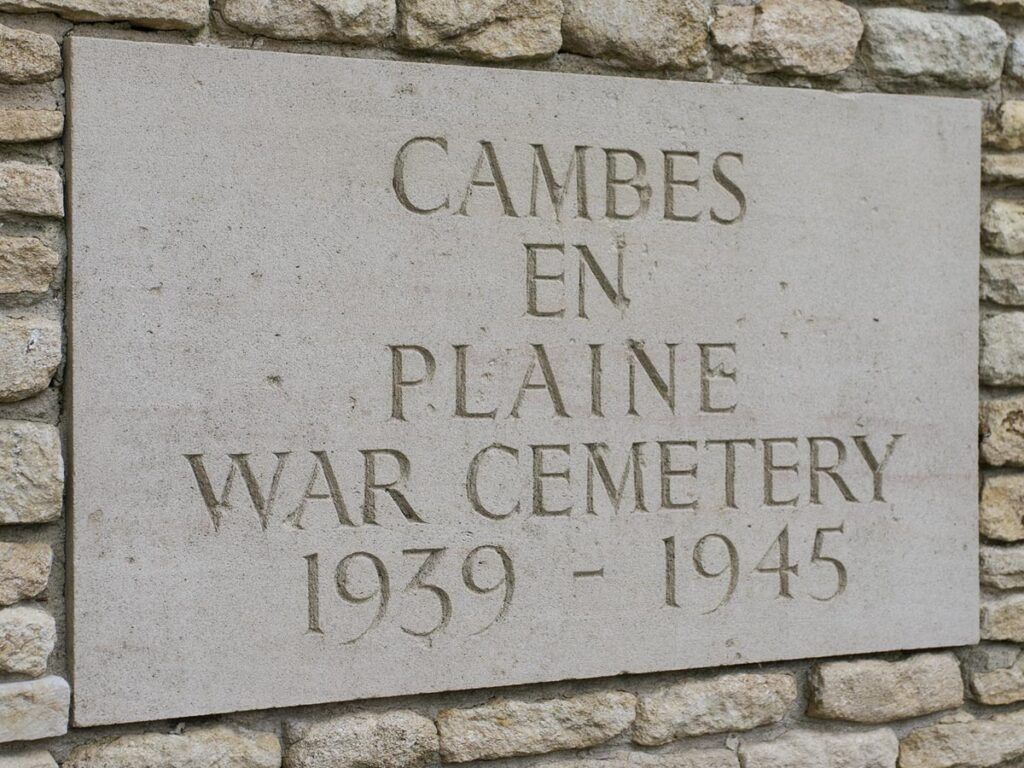
For broader trip planning, the Normandy Tourism website (normandy-tourism.org) has detailed guides to D-Day sites, including La Cambe, plus downloadable maps.
TripAdvisor is handy for reviews and tips from recent visitors. Check their “Things to Do” for attractions and accommodation nearby.
The Caen Memorial Museum site (memorial-caen.fr) has info on their Peace Trail, which links D-Day sites like La Cambe.
Recommended Books and Documentaries
“D-Day: June 6, 1944” by Stephen Ambrose is a classic for understanding Operation Overlord and Normandy. It gives great context for La Cambe.
“The Dead and Those About to Die” by John C. McManus goes deep into the fighting that led to the casualties buried at La Cambe.
If you prefer visuals, “World War II in Color” shows real Normandy footage. The HBO series “Band of Brothers” covers the American experience.
“Normandy: A Graphic History of D-Day” by Wayne Vansant is an illustrated guide—perfect for younger visitors or anyone who likes to learn visually.
Get a discount of 15% to 70% on La Cambe accommodations and tours! Look for deals here:
La Cambe Hotels and Tours

